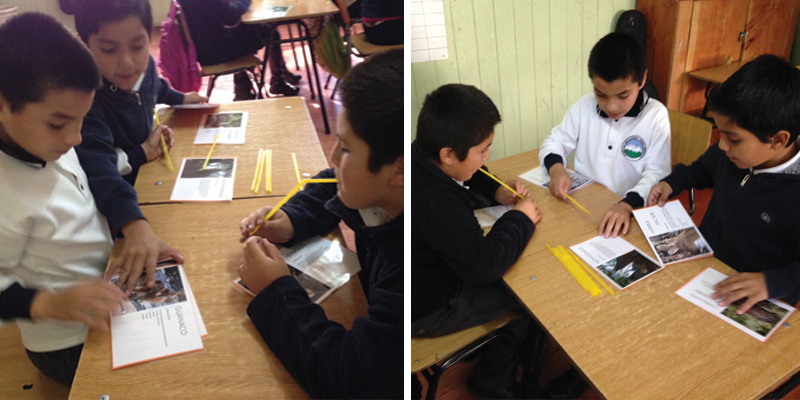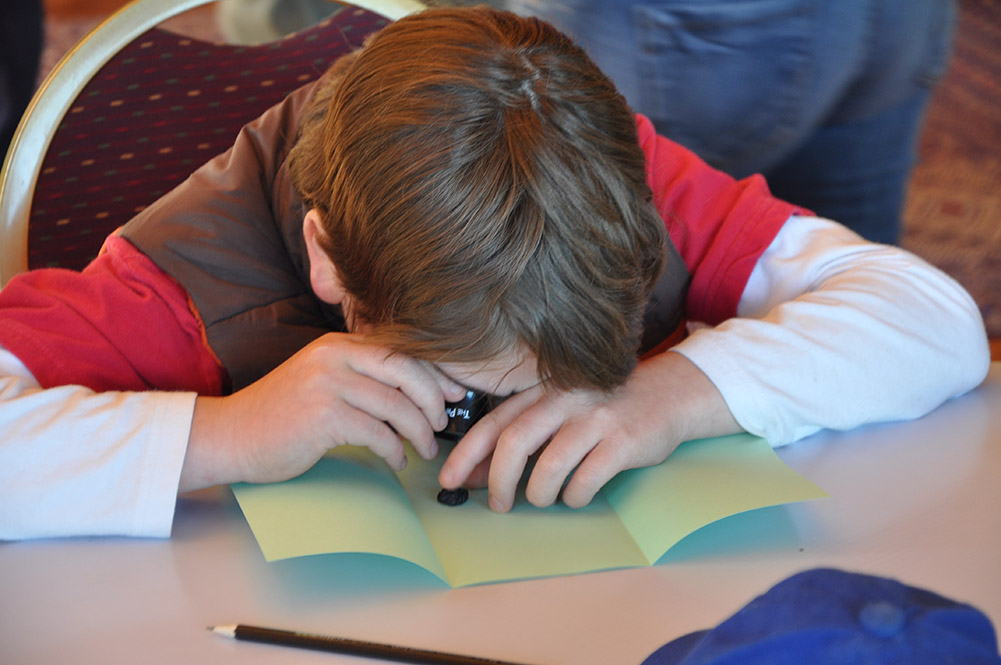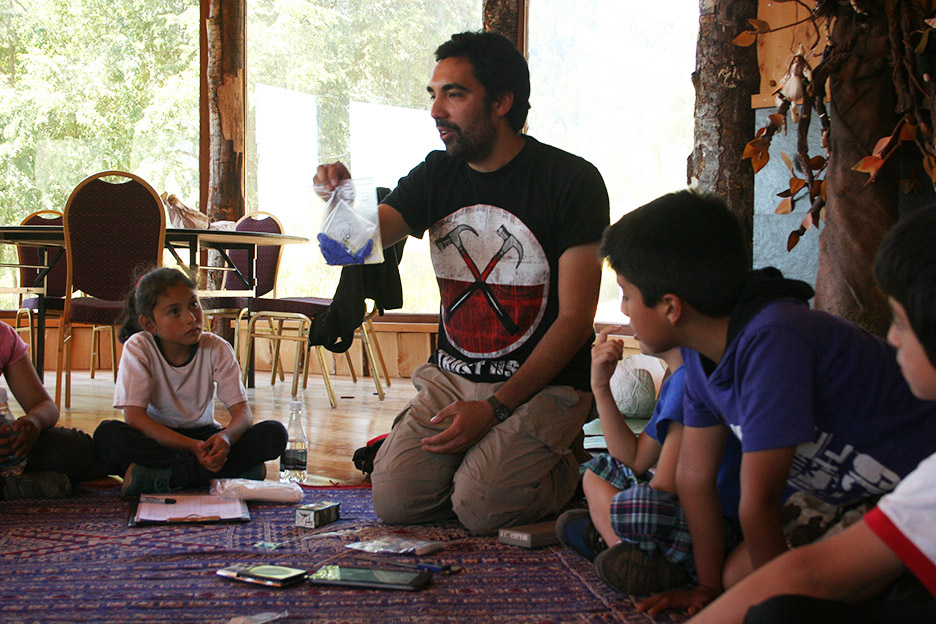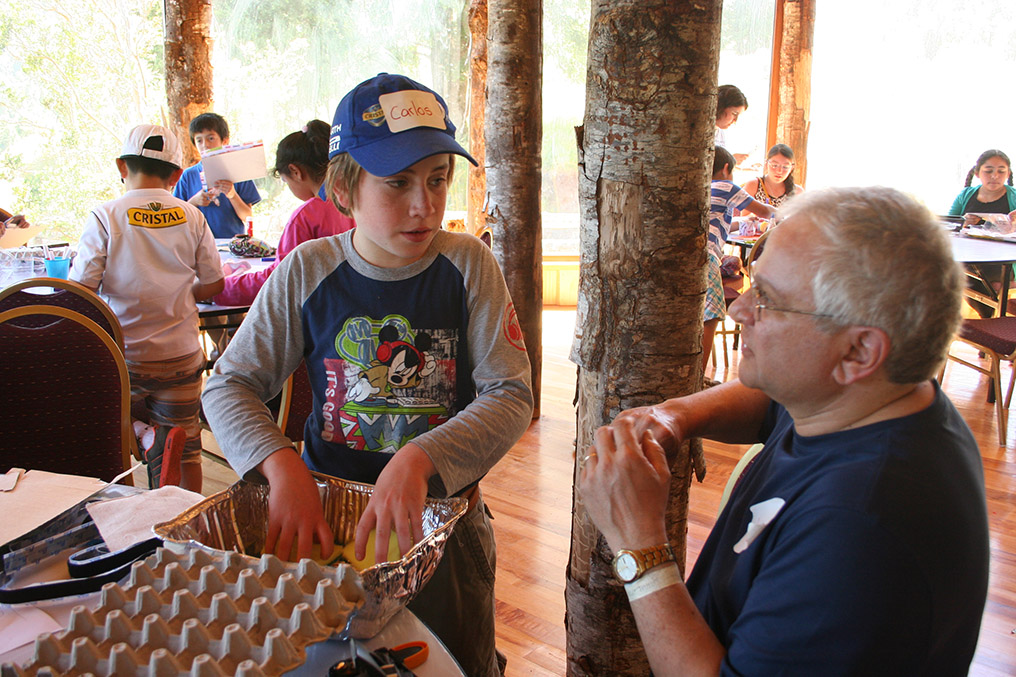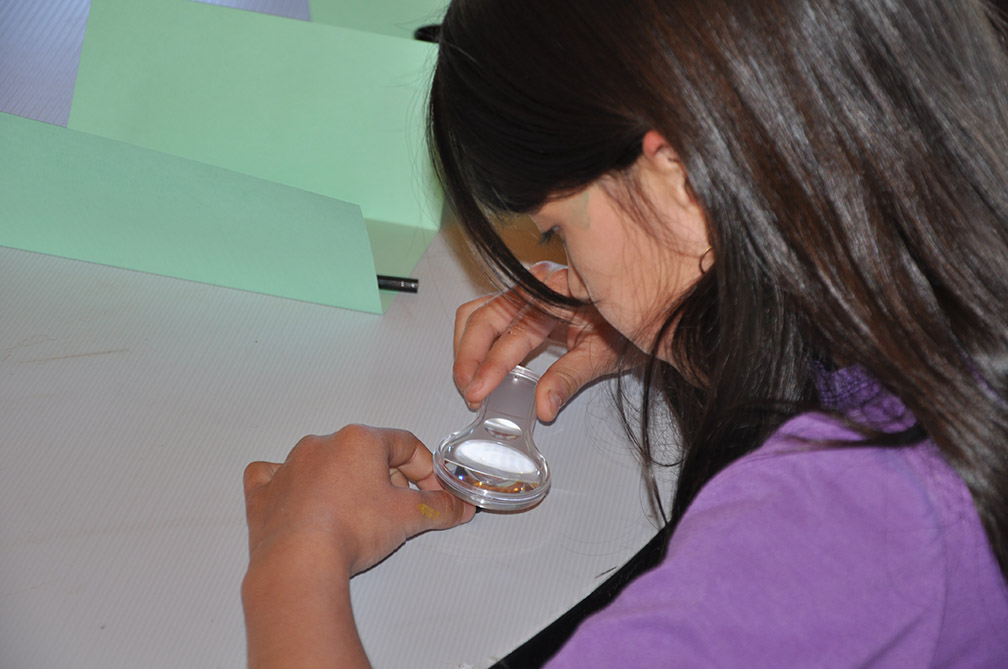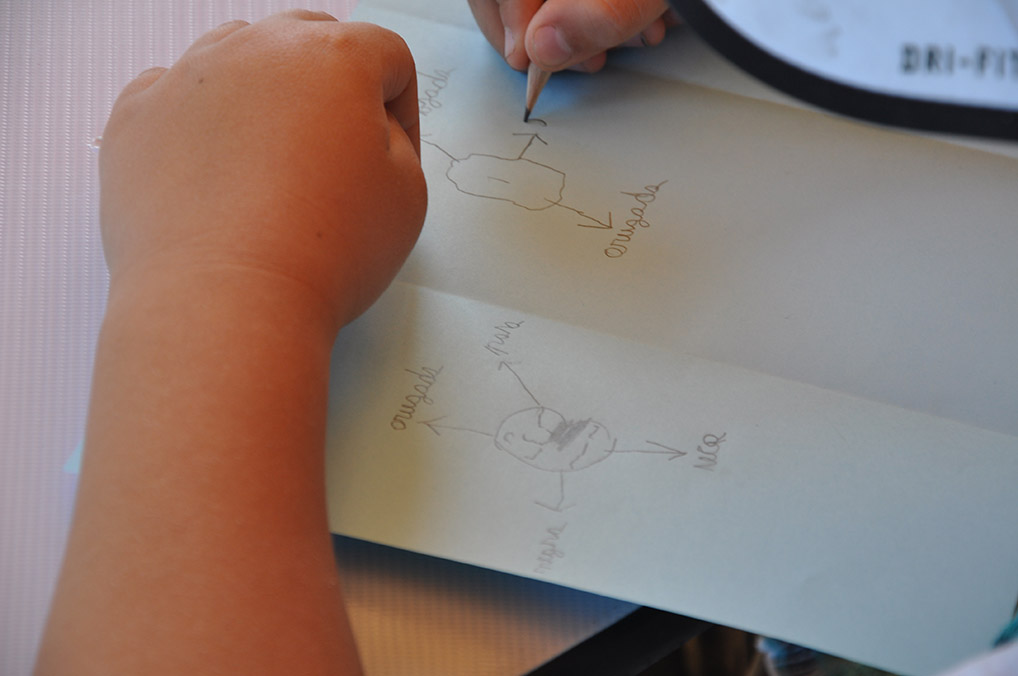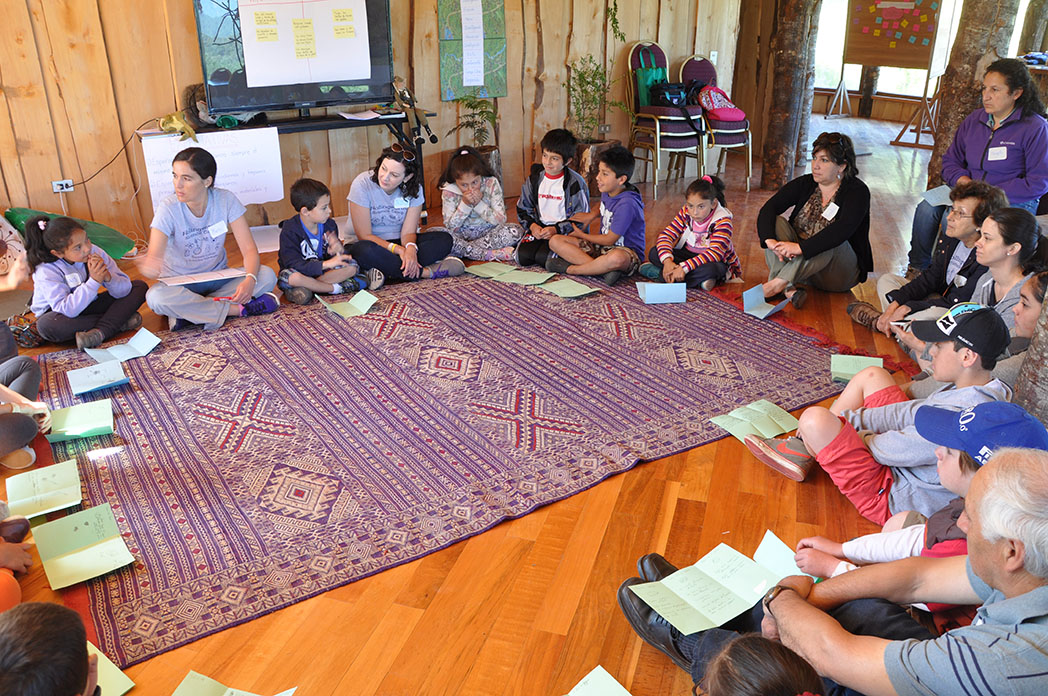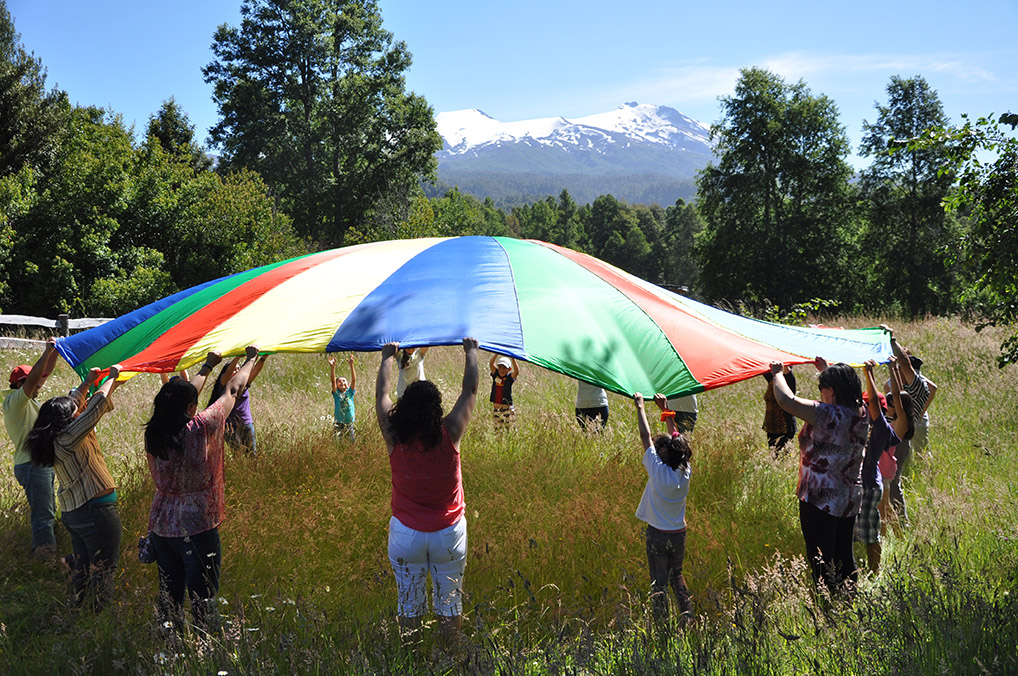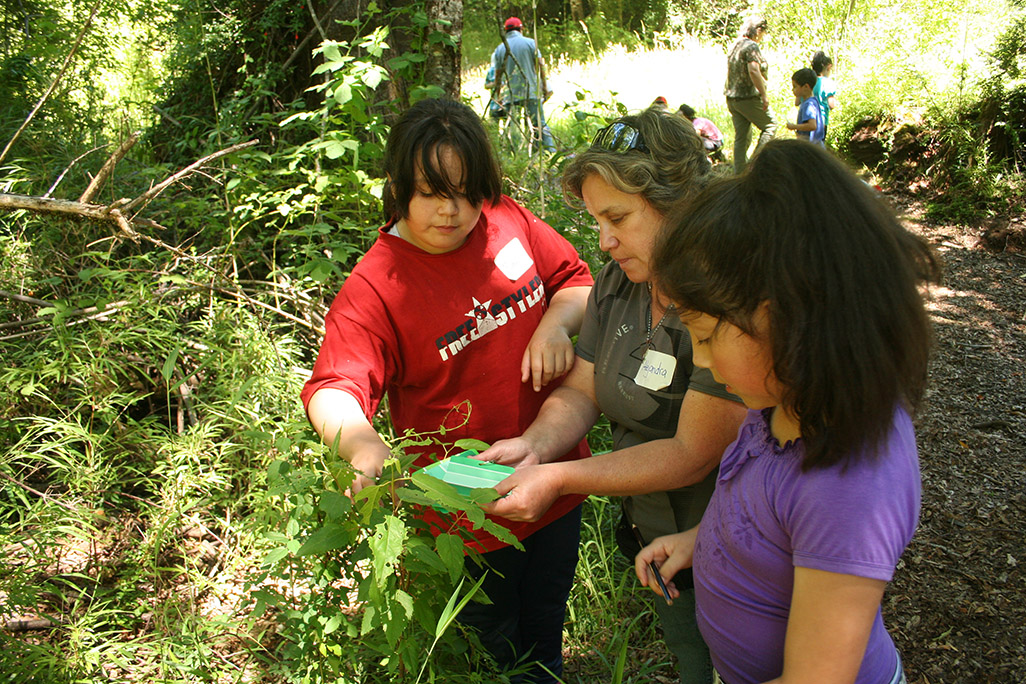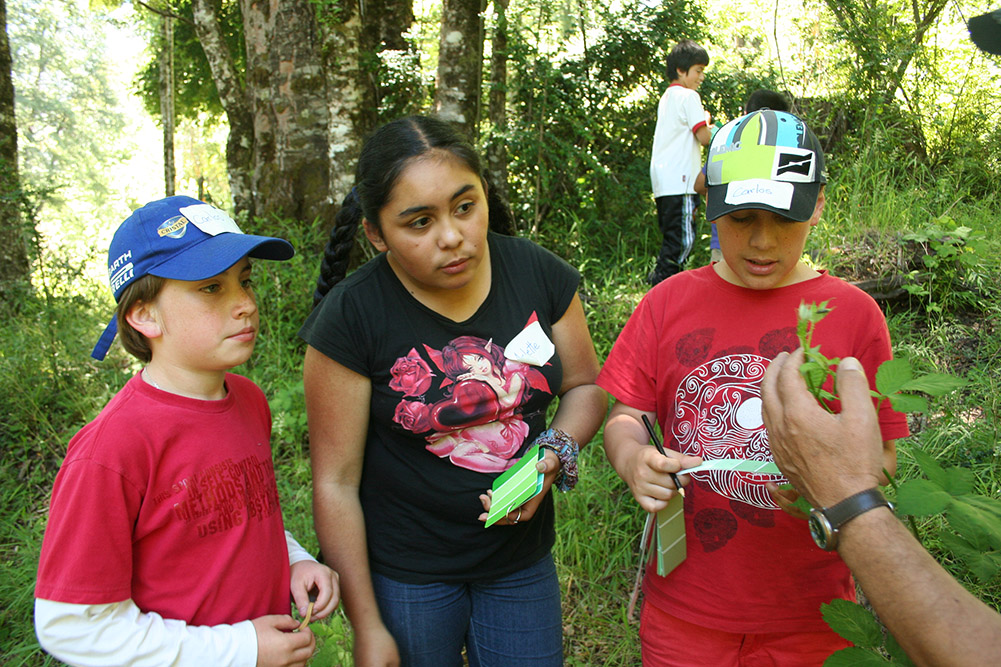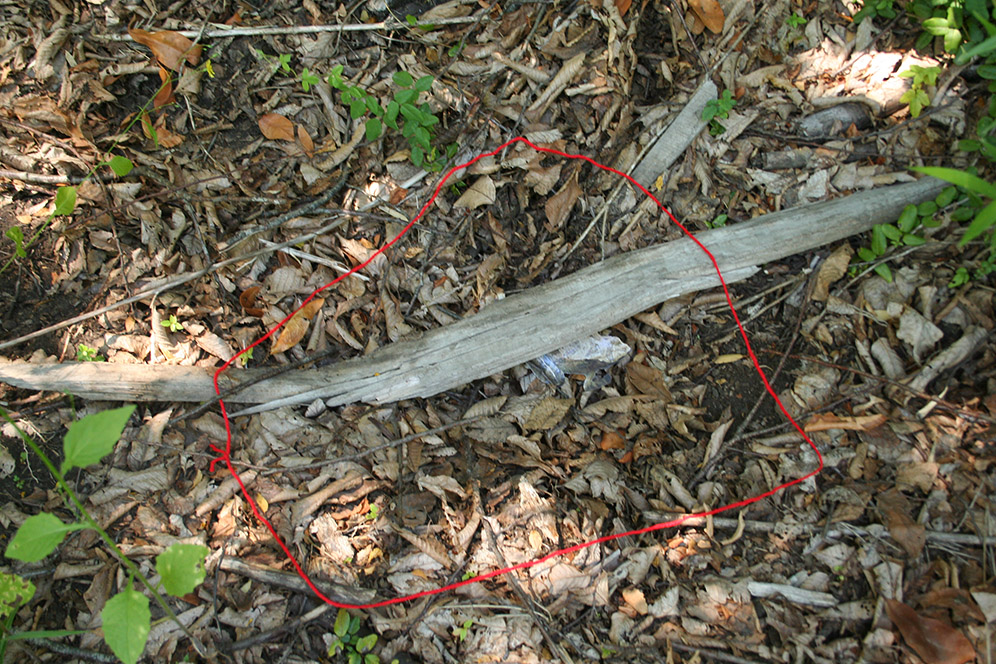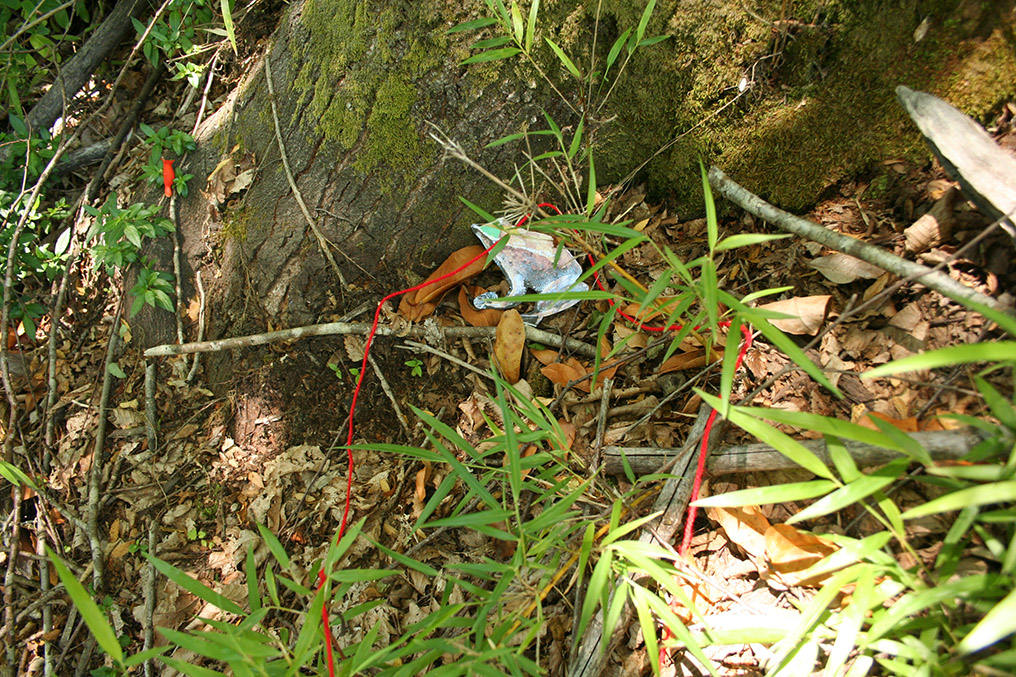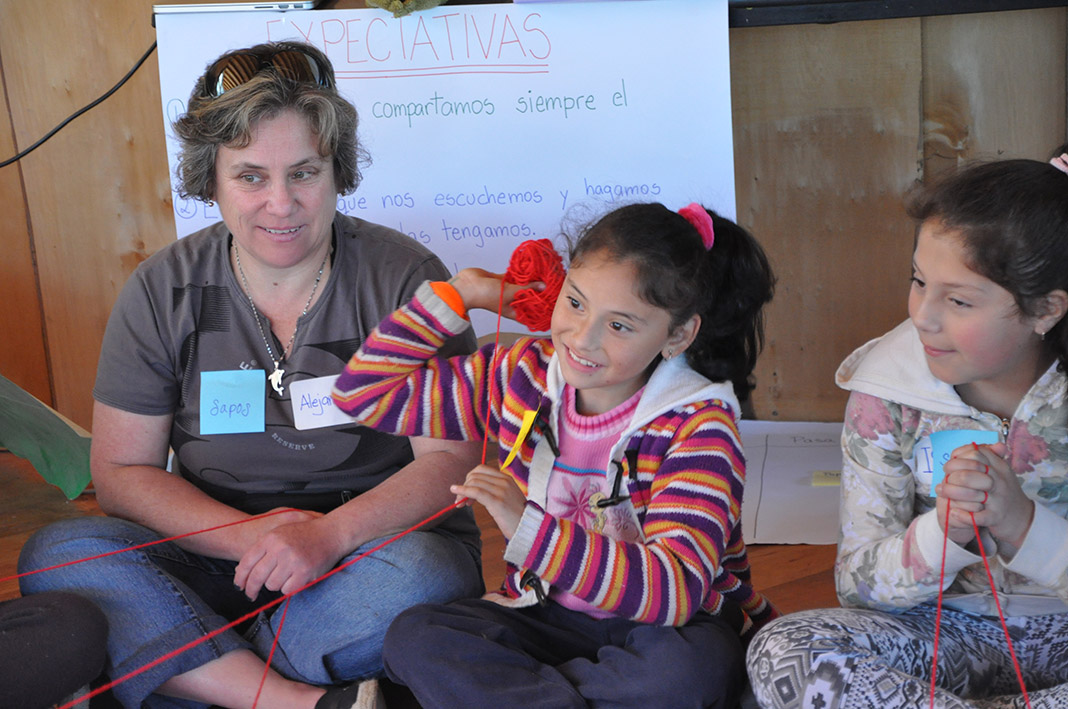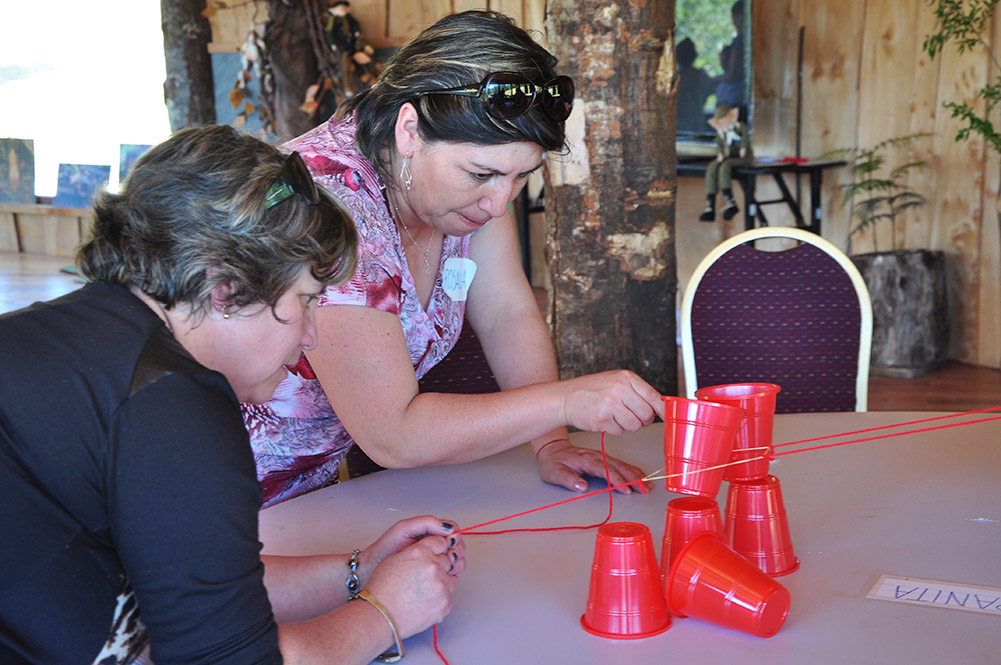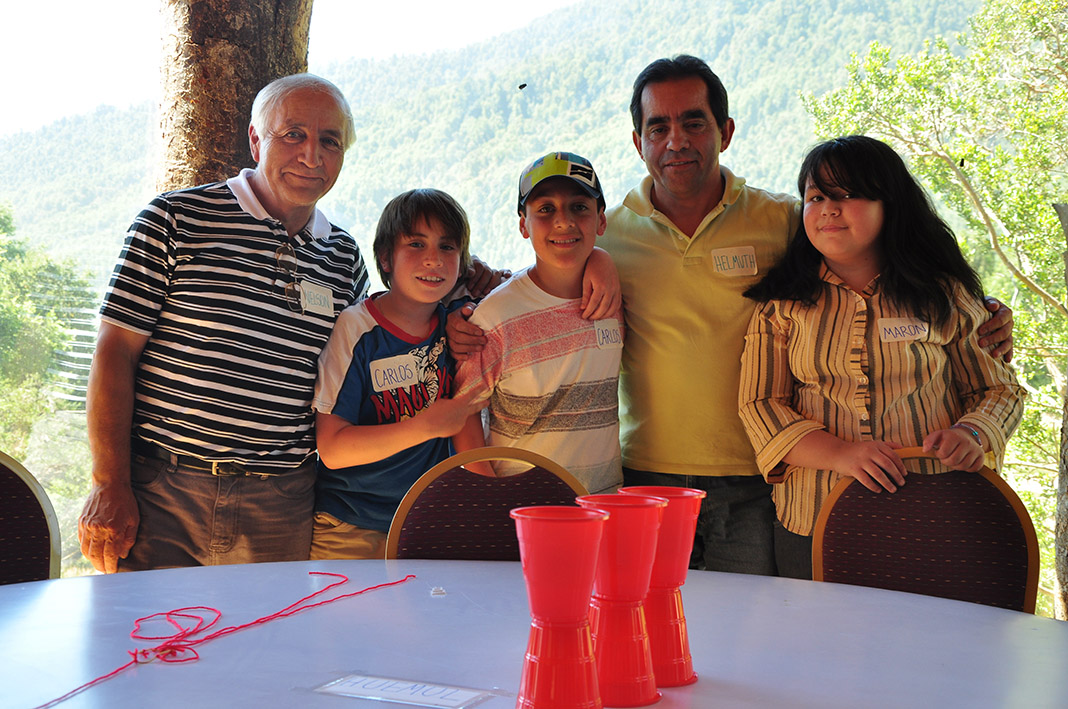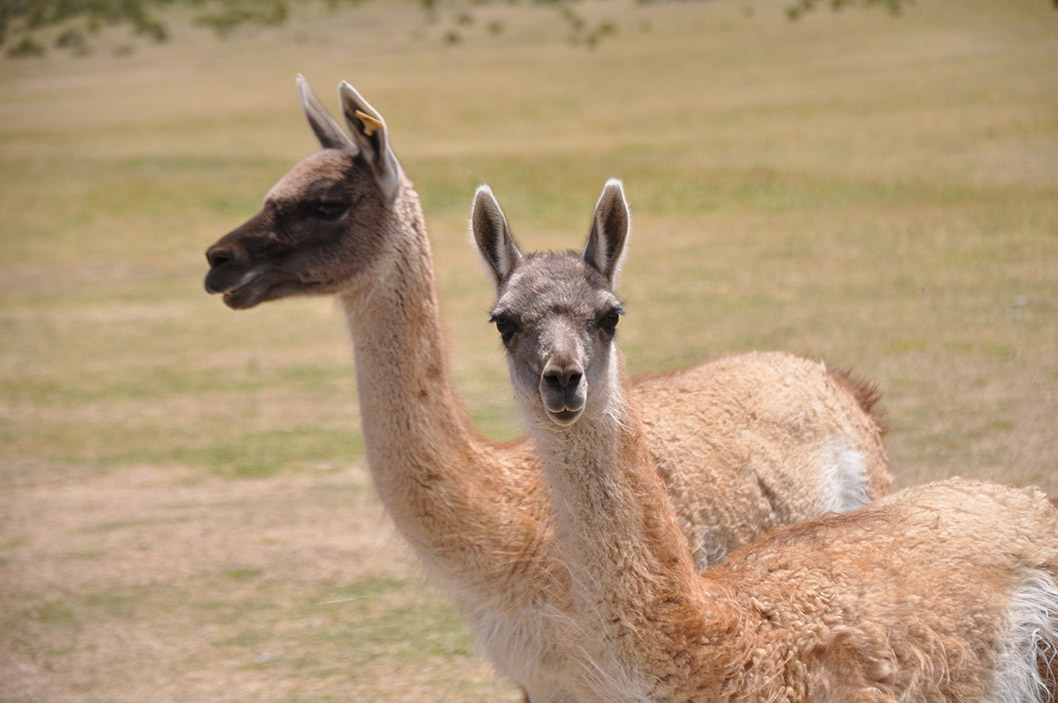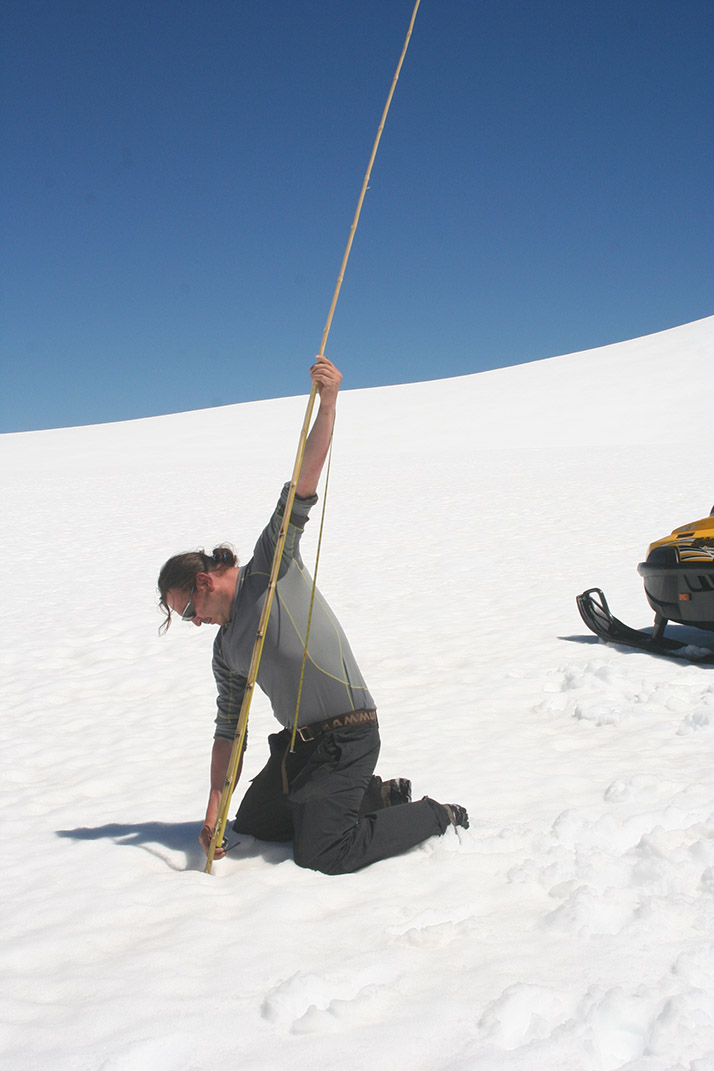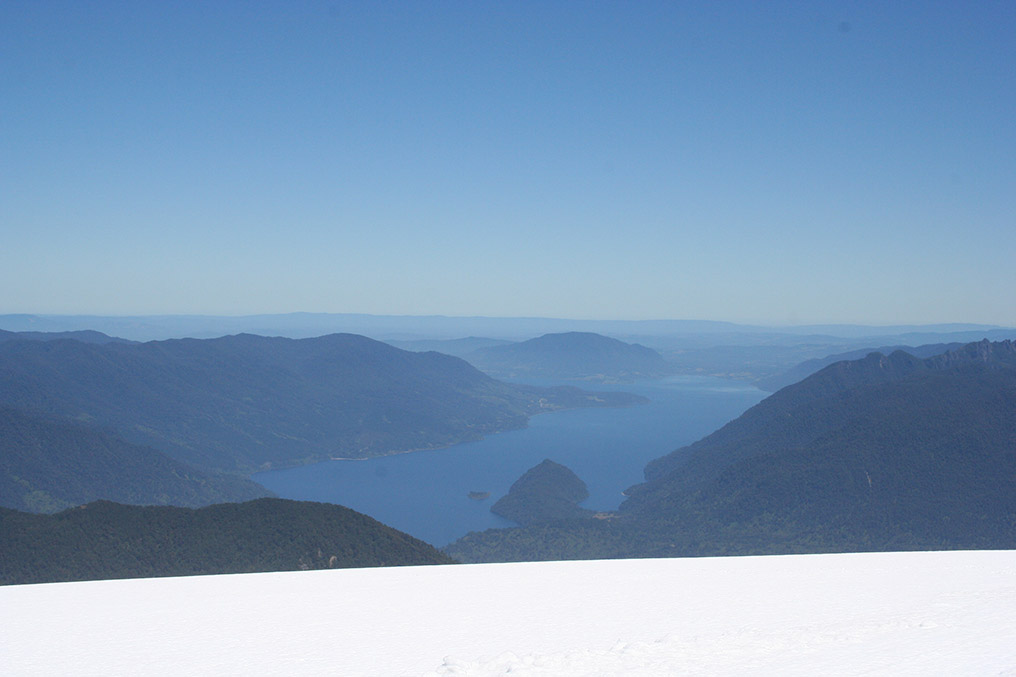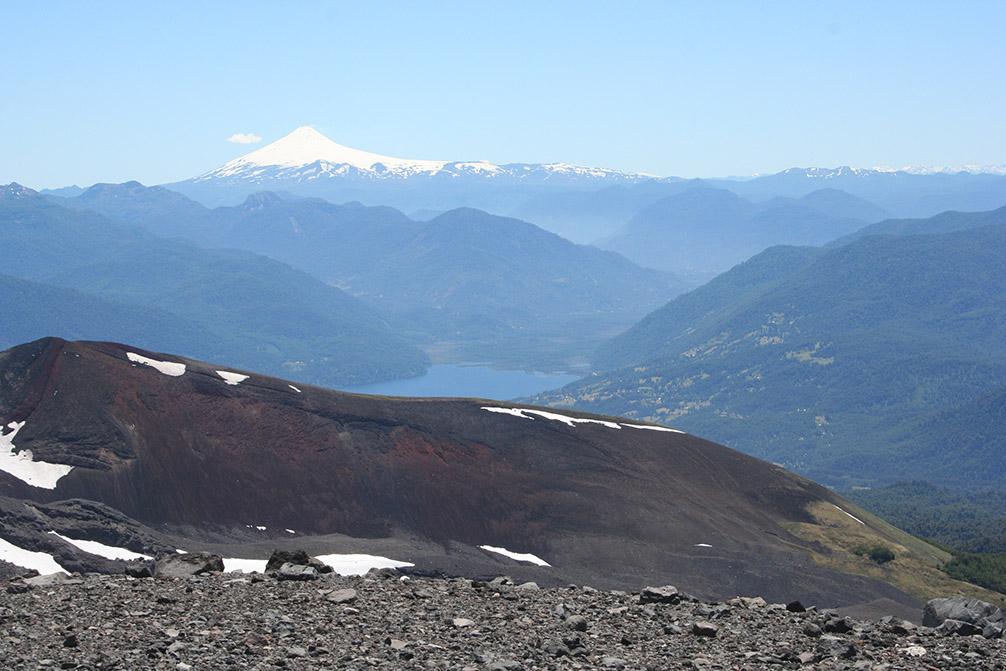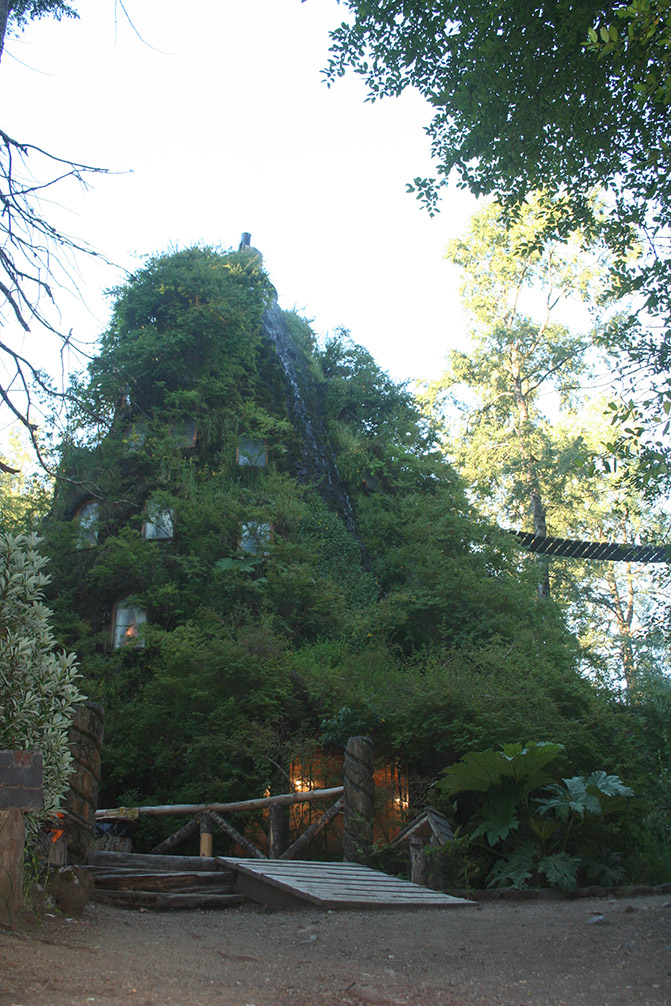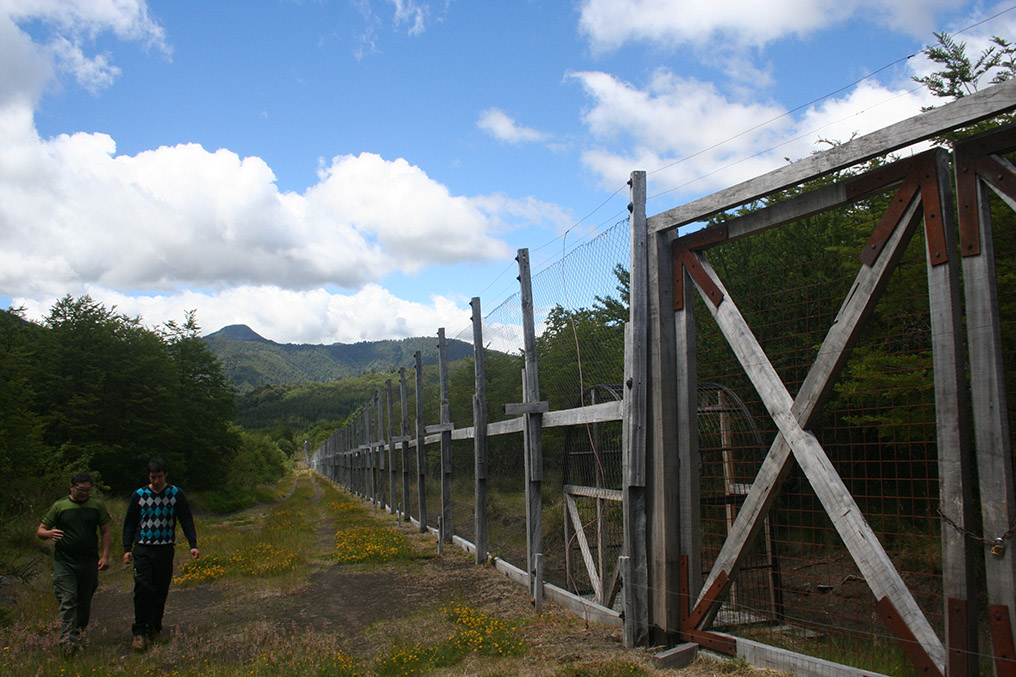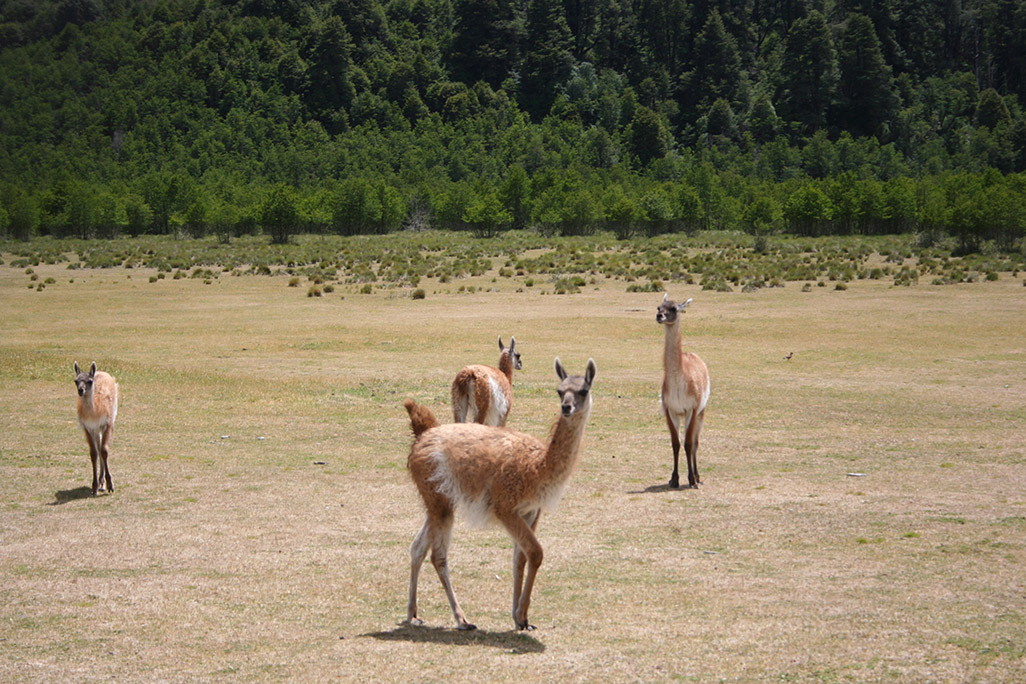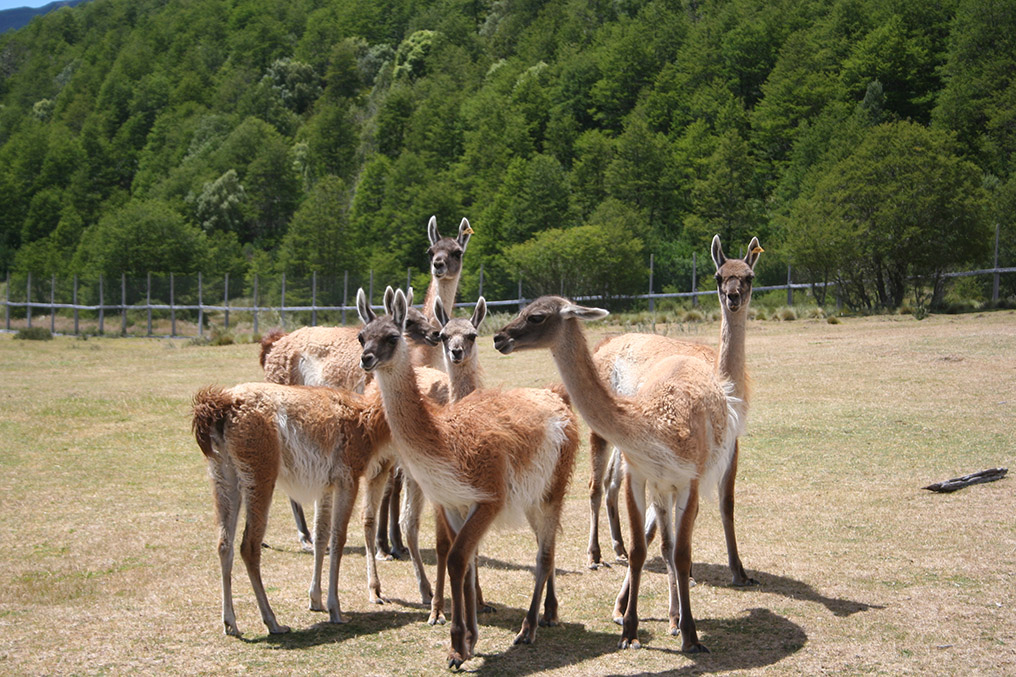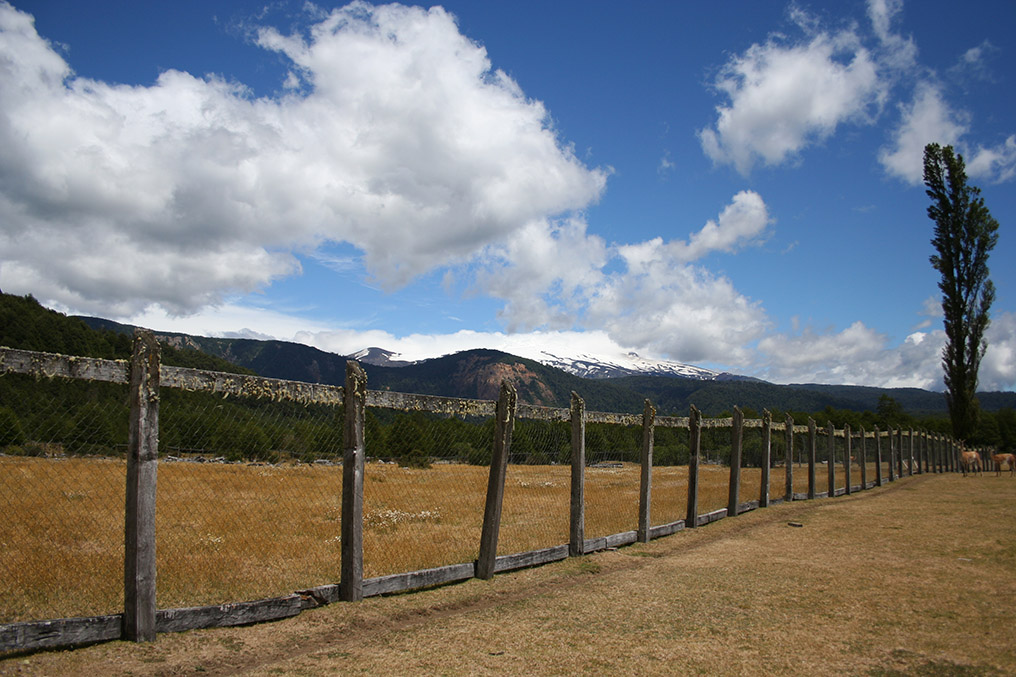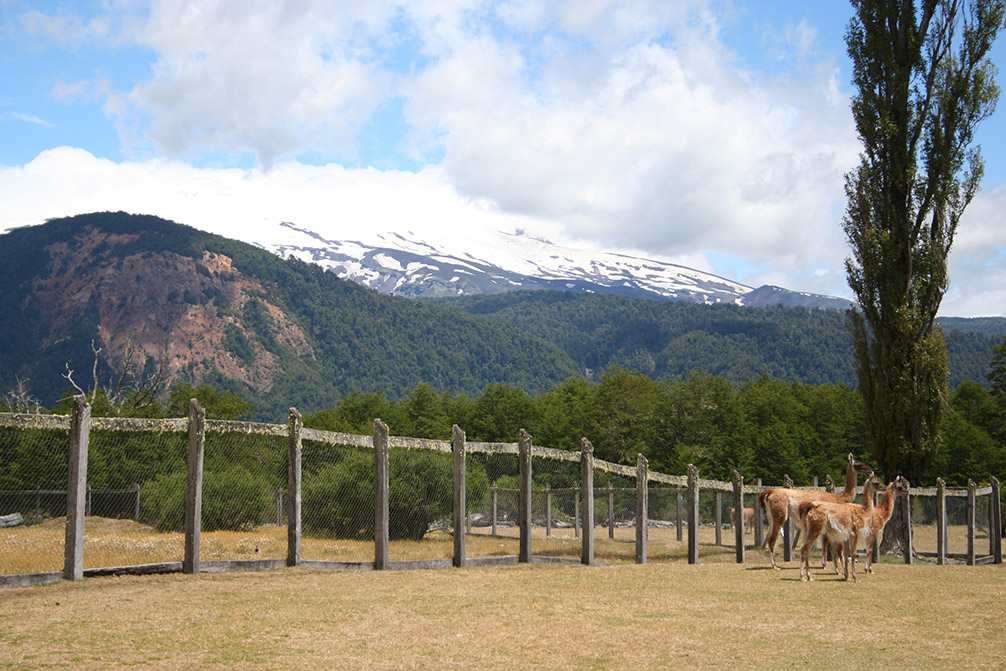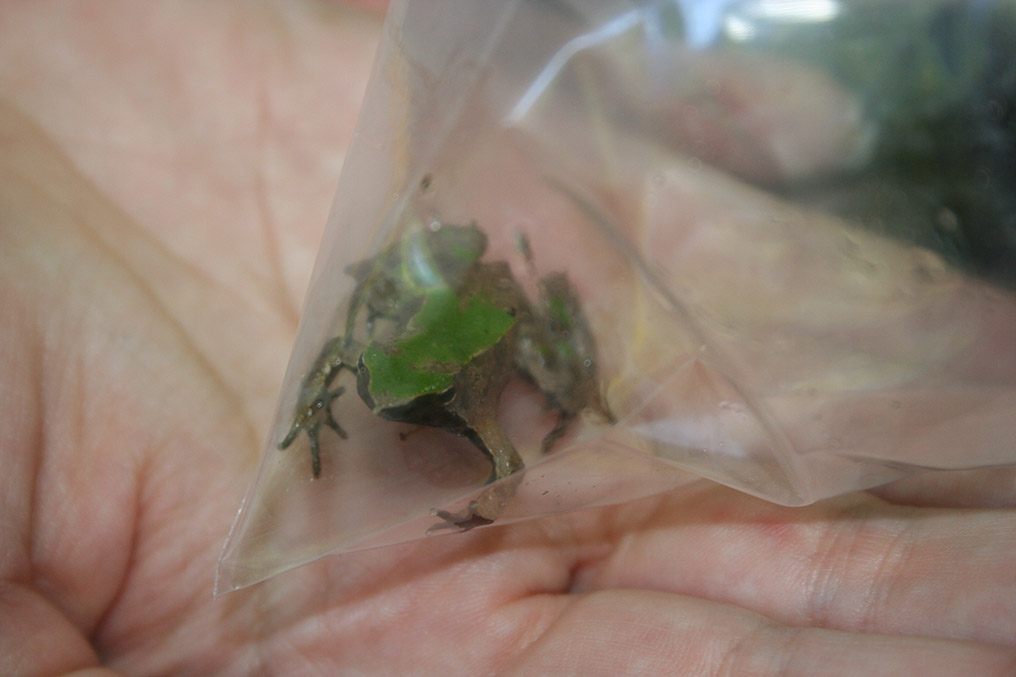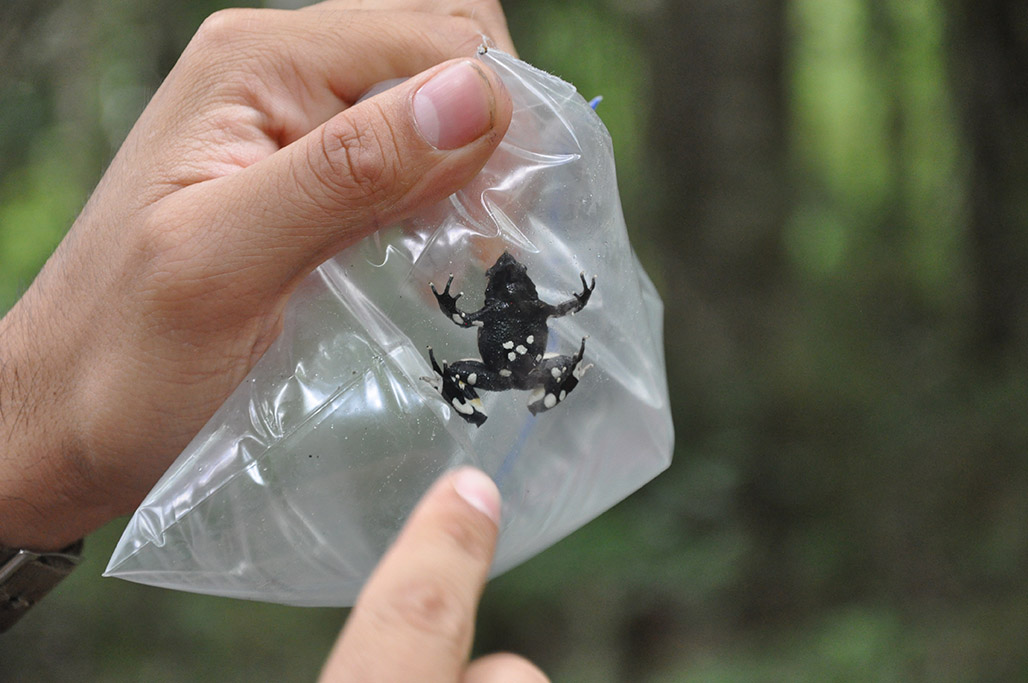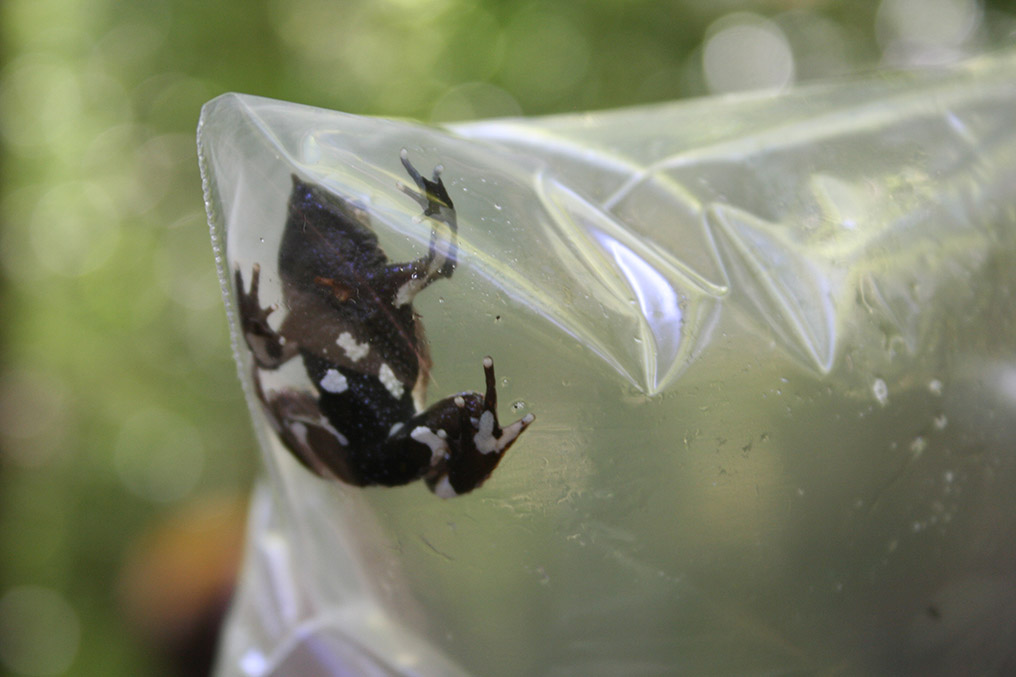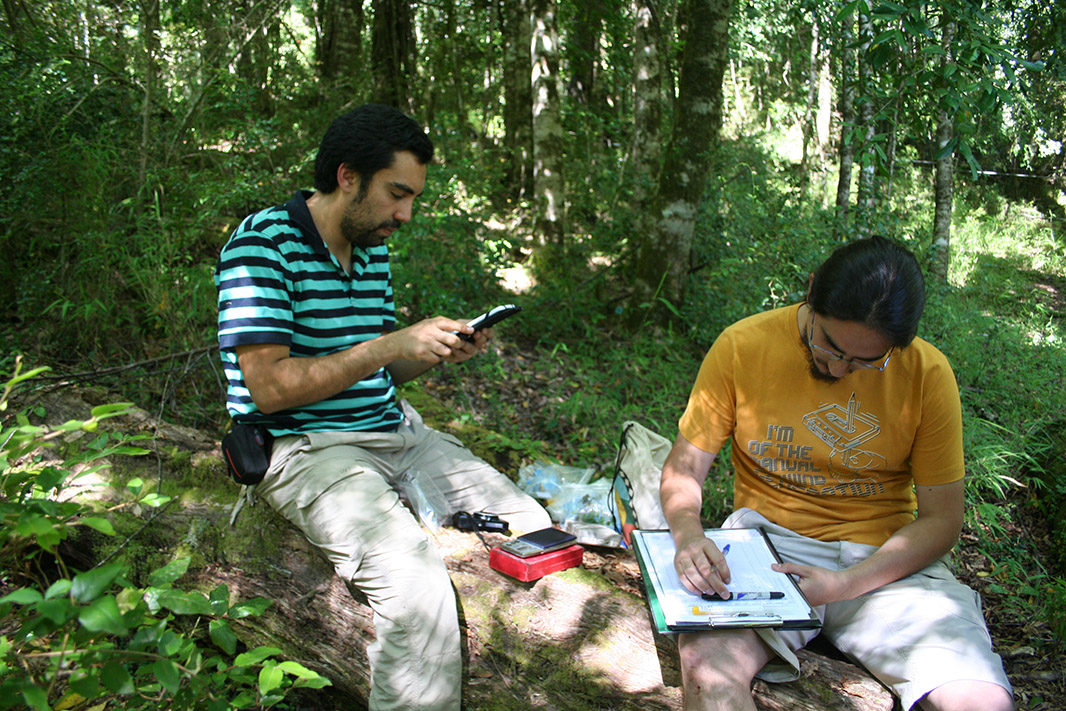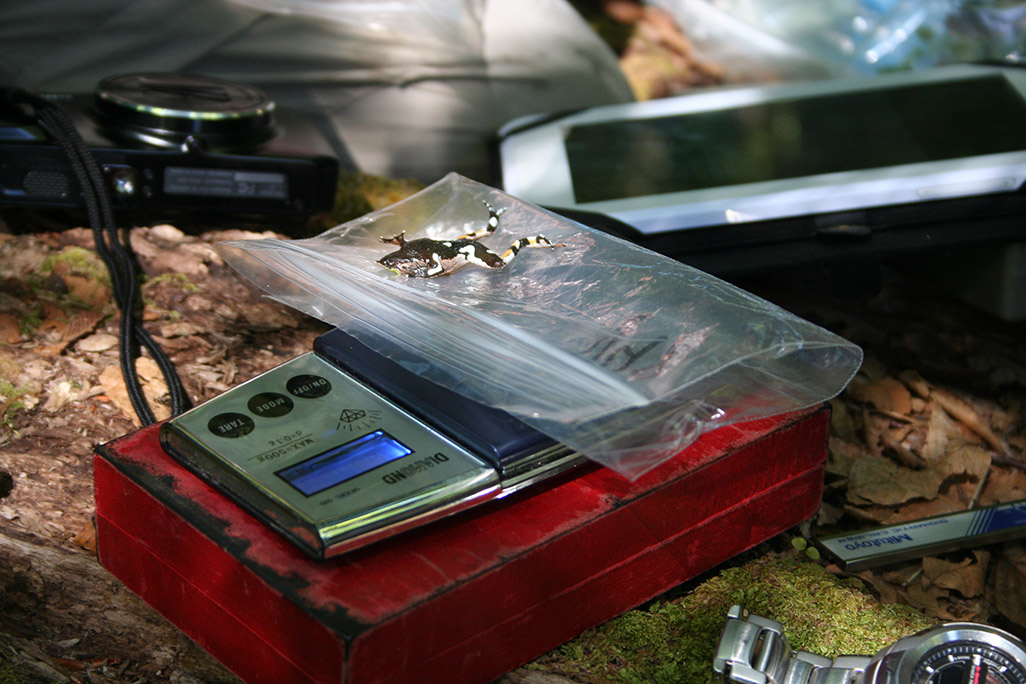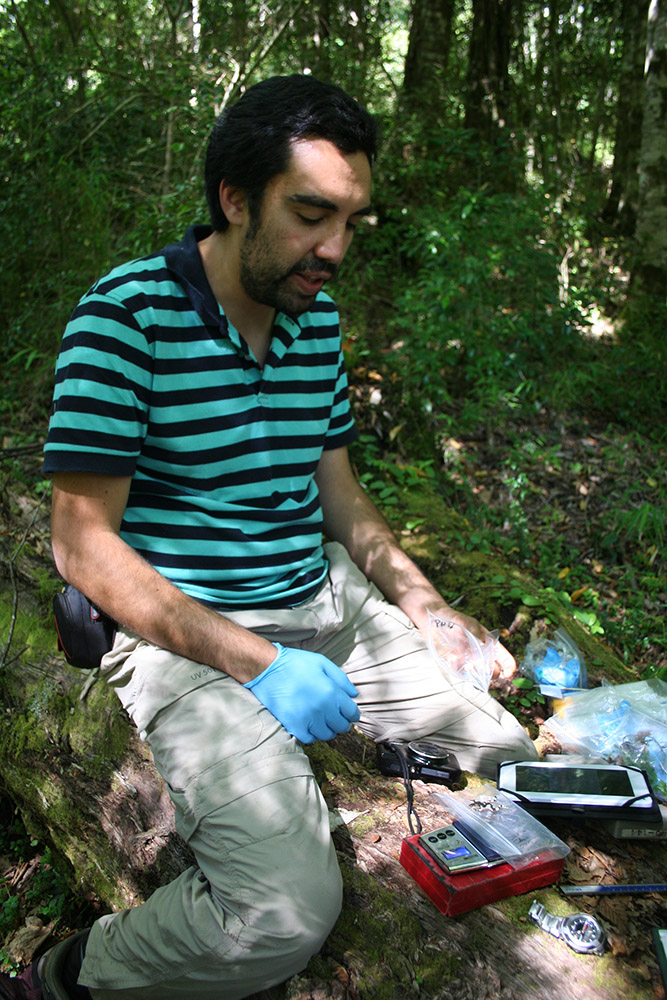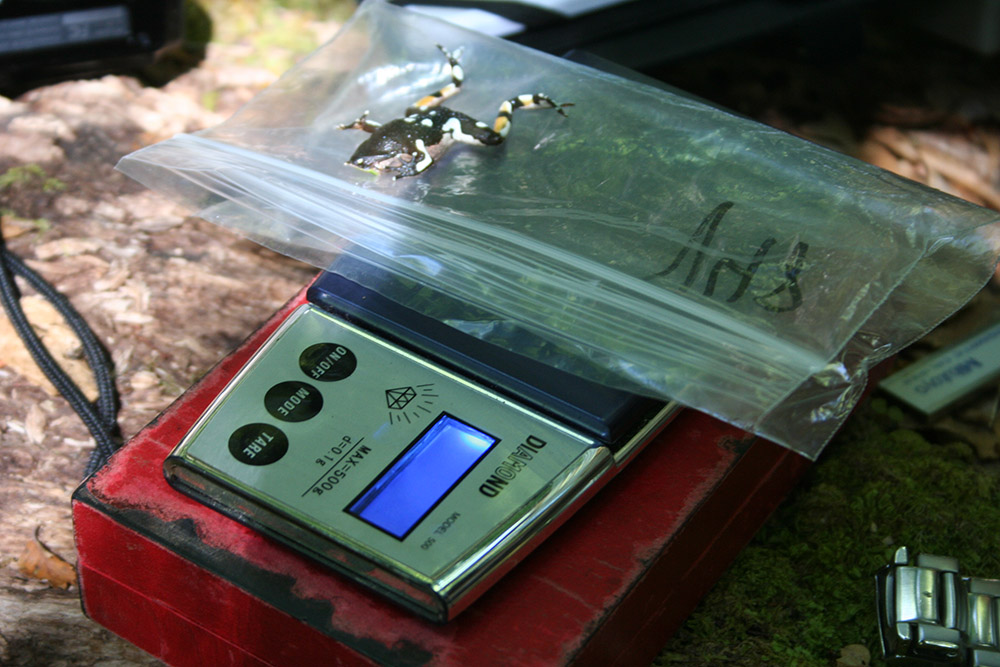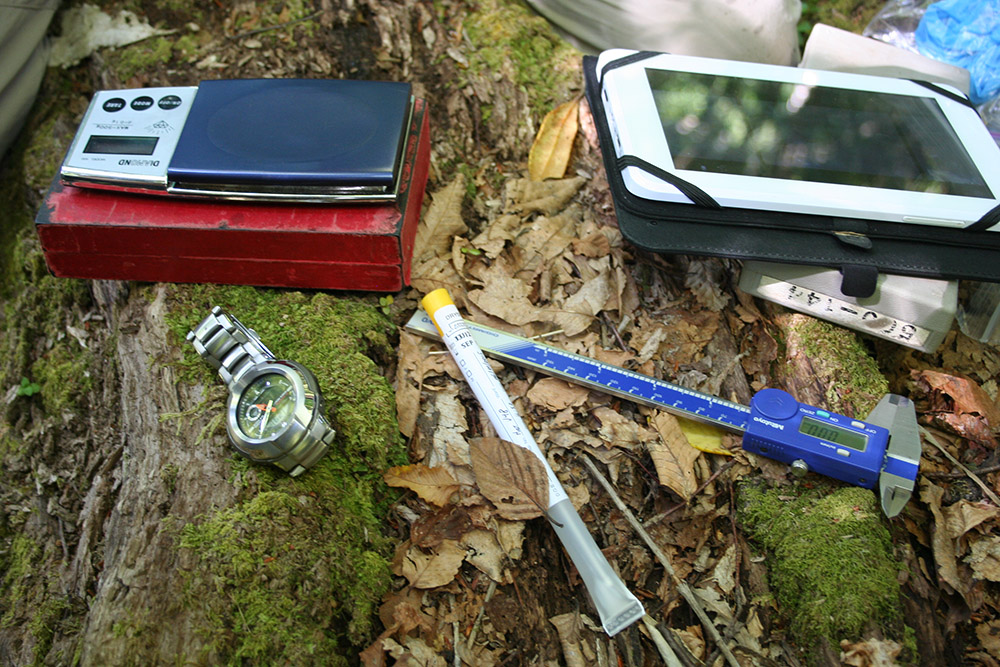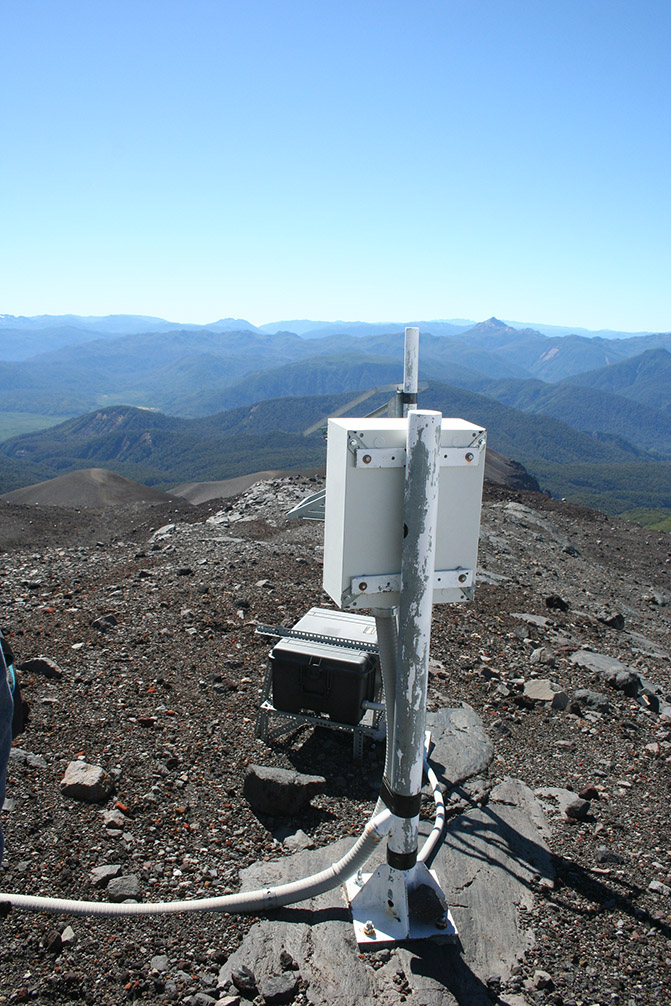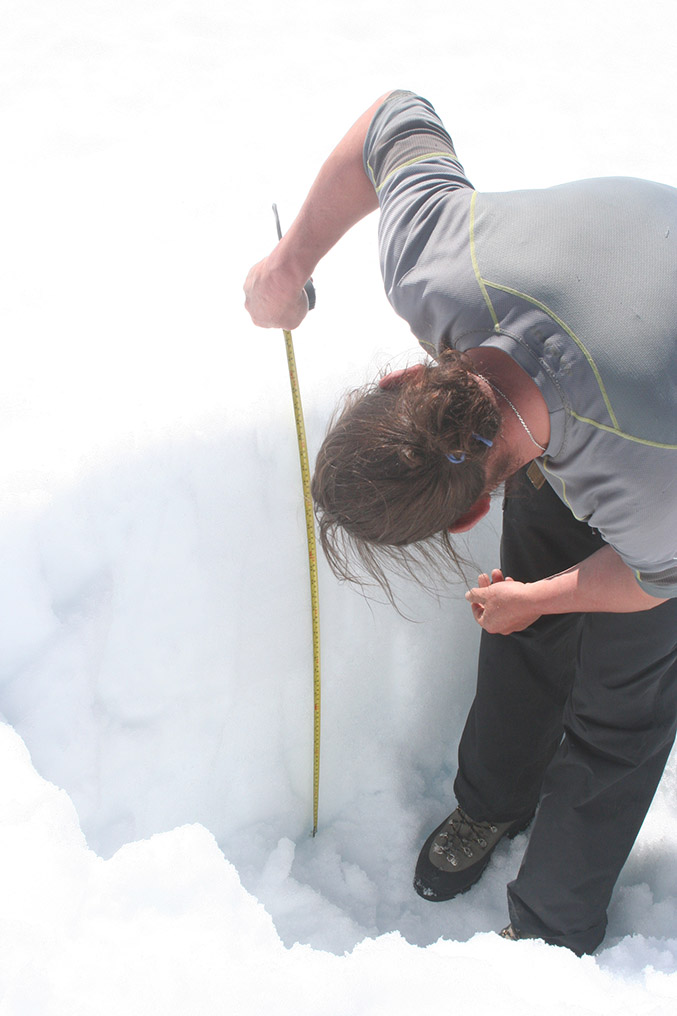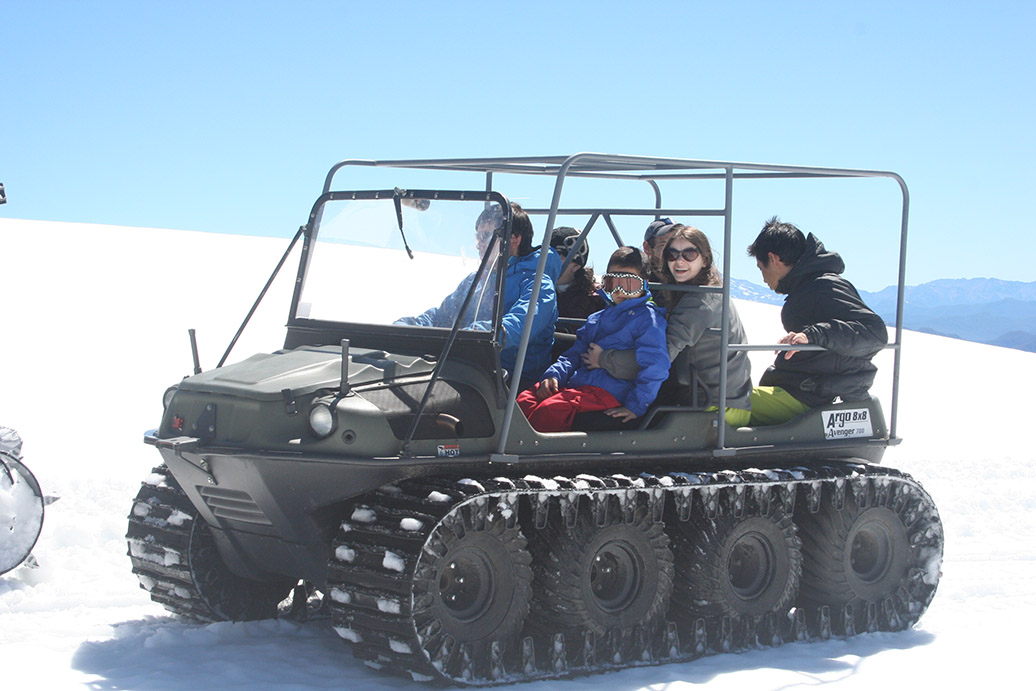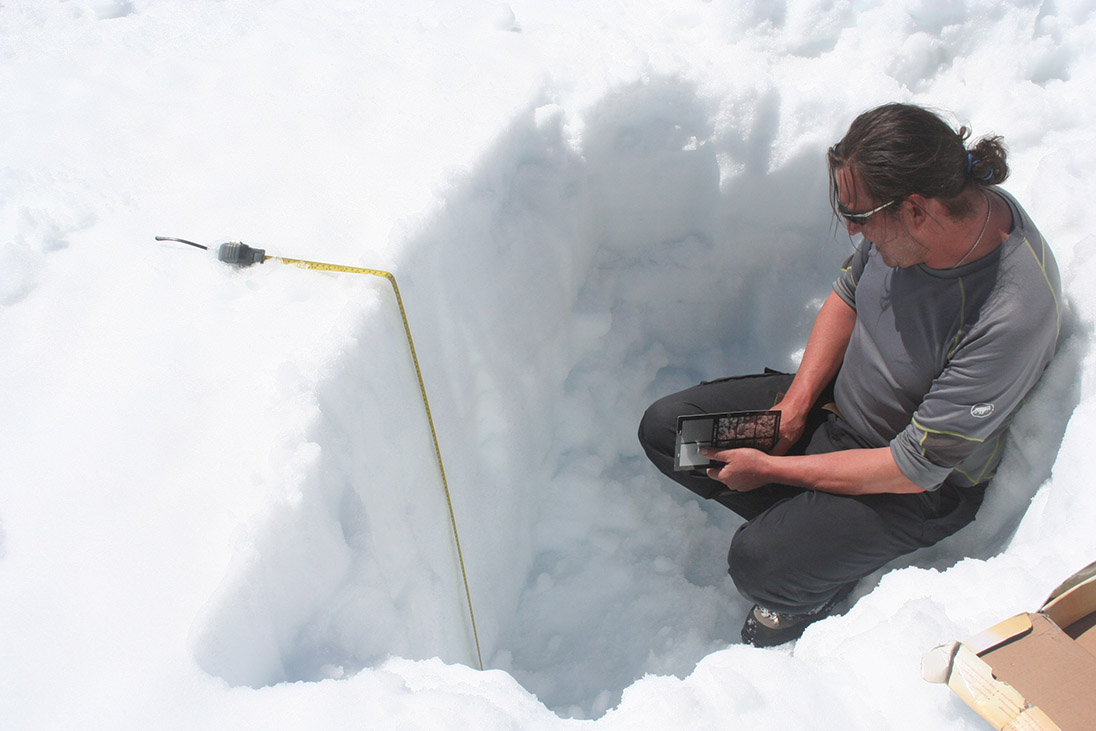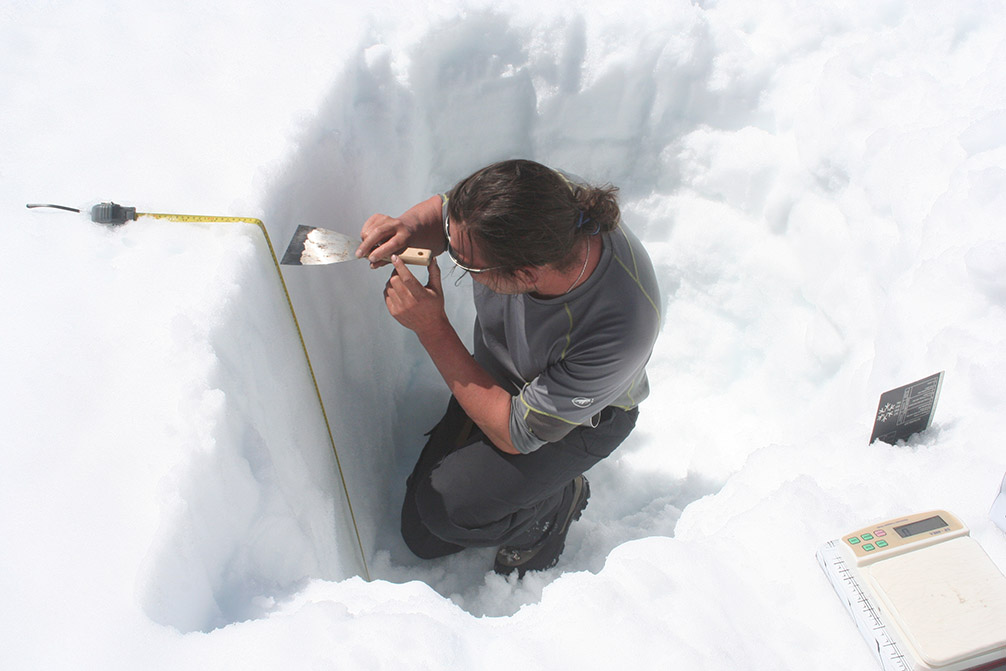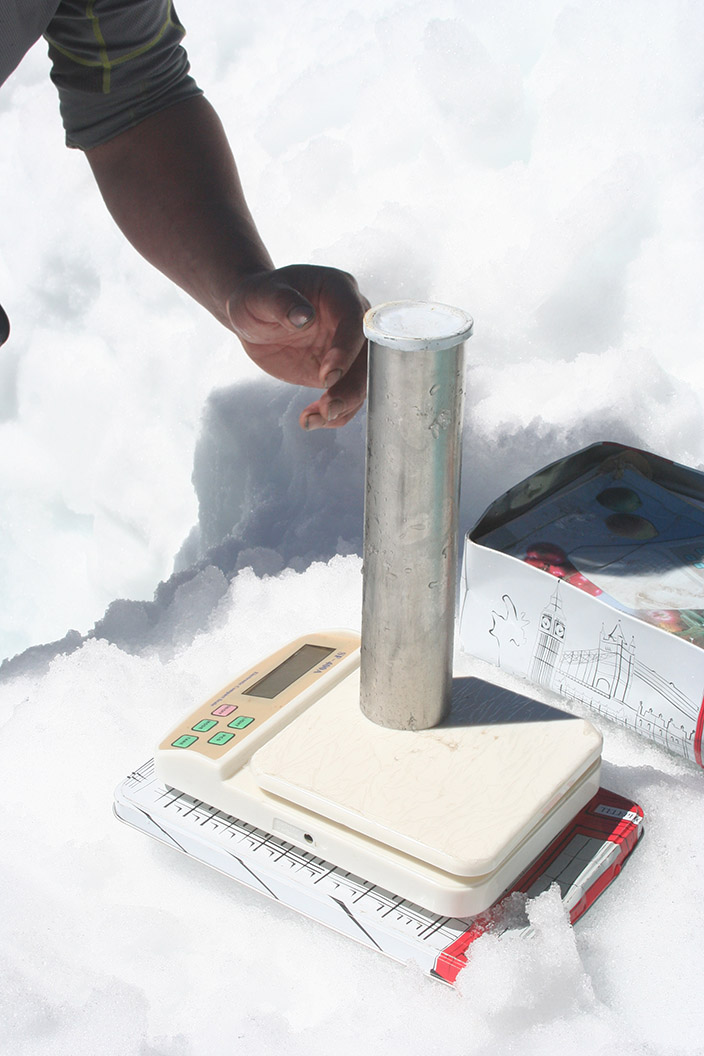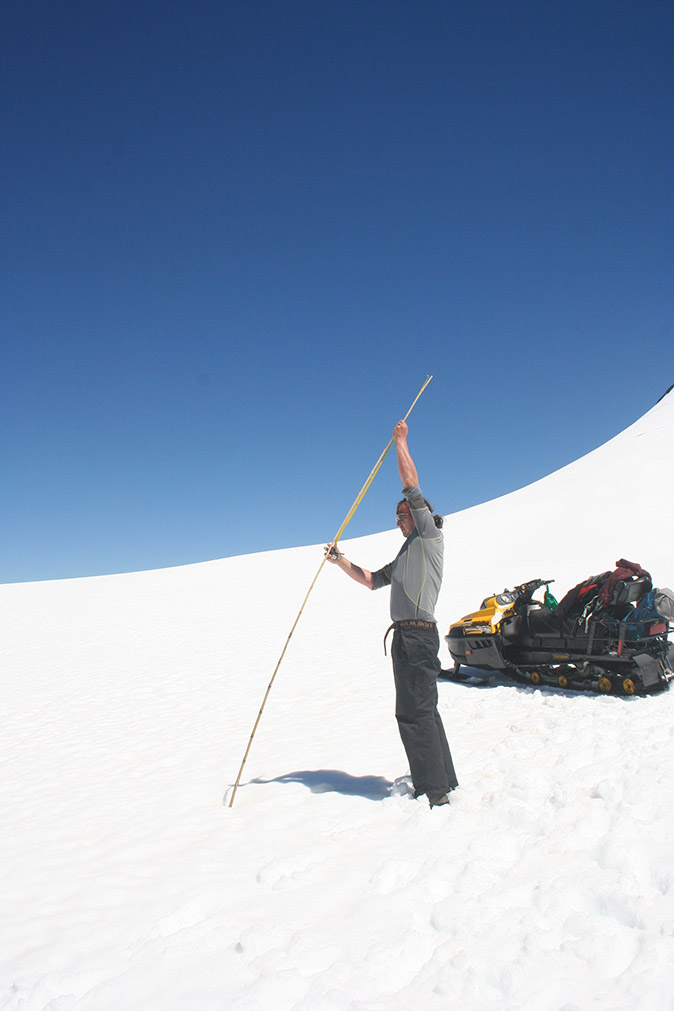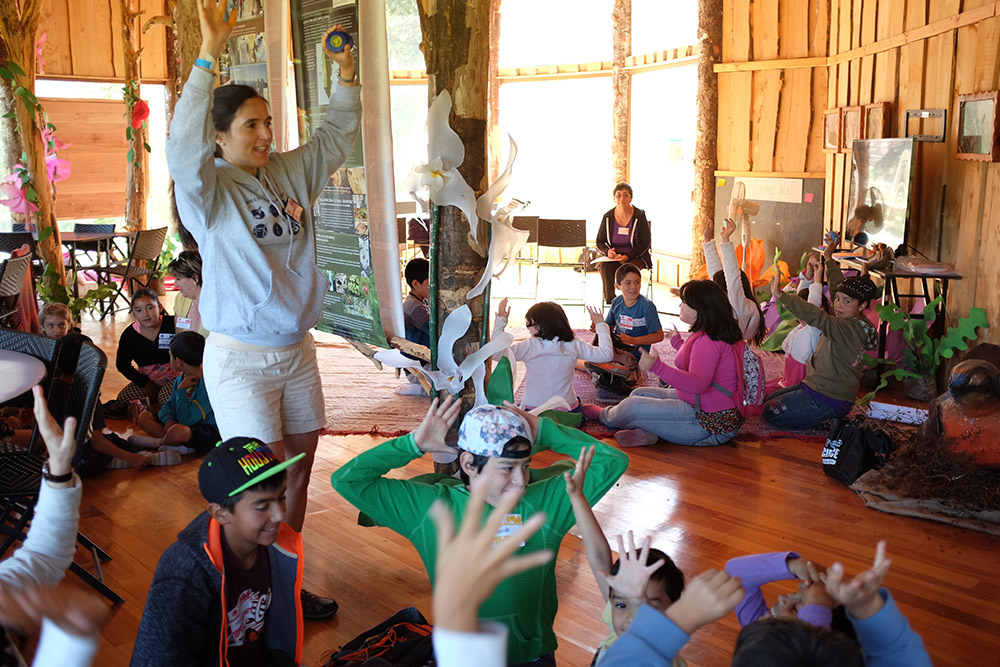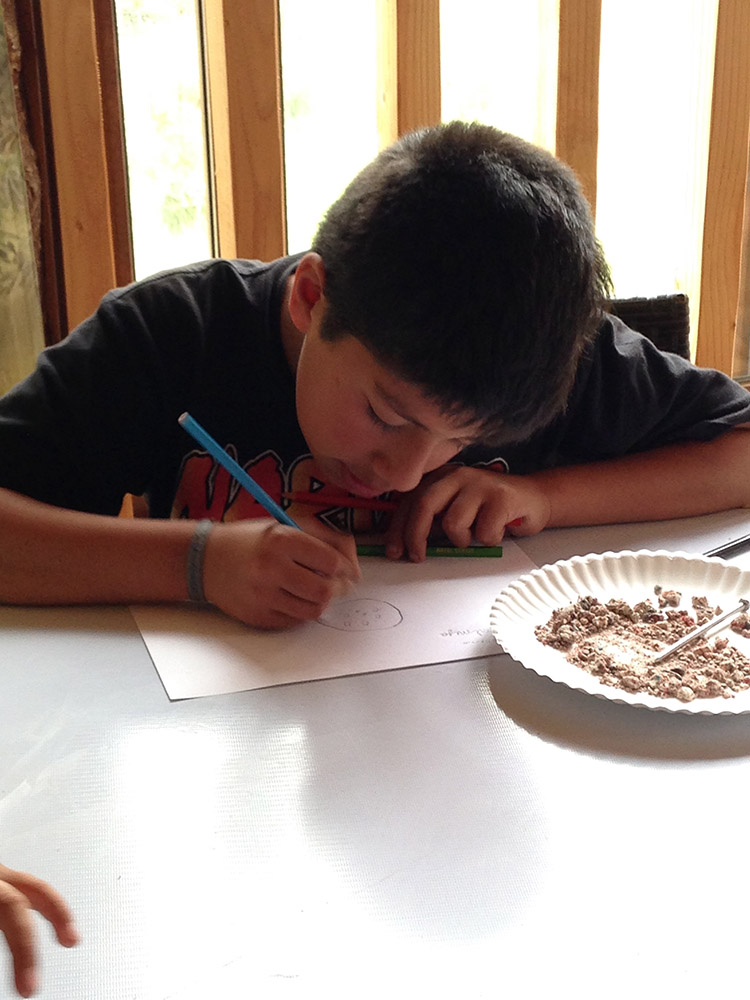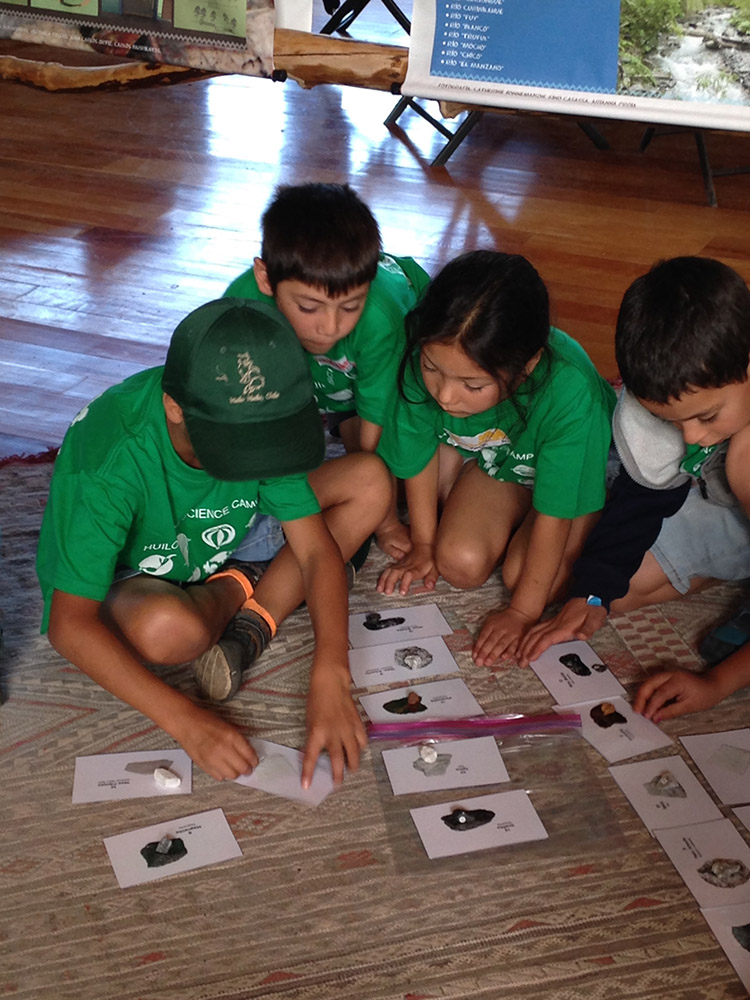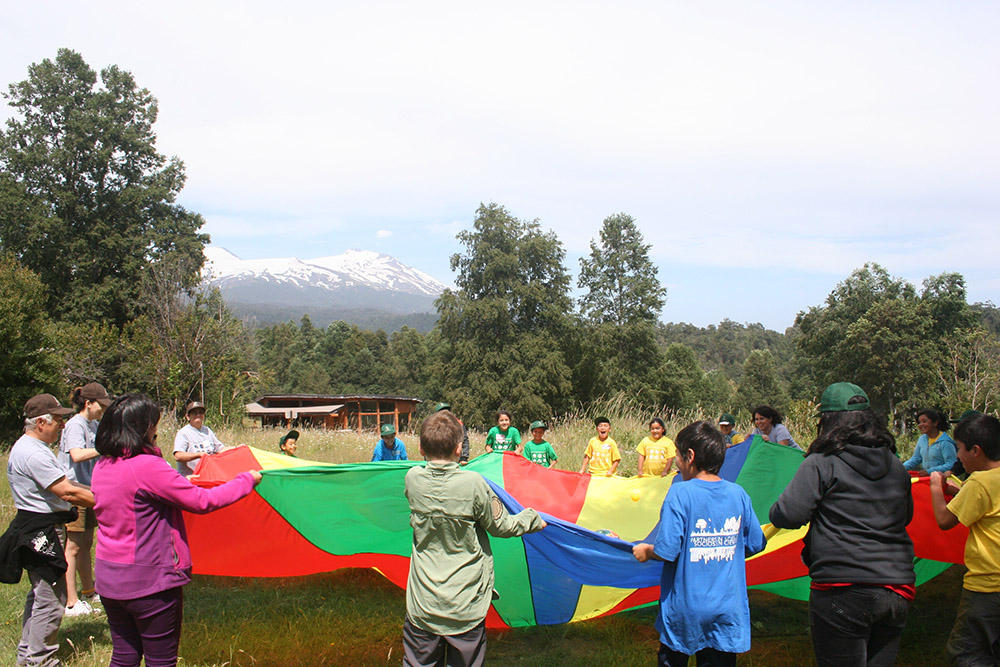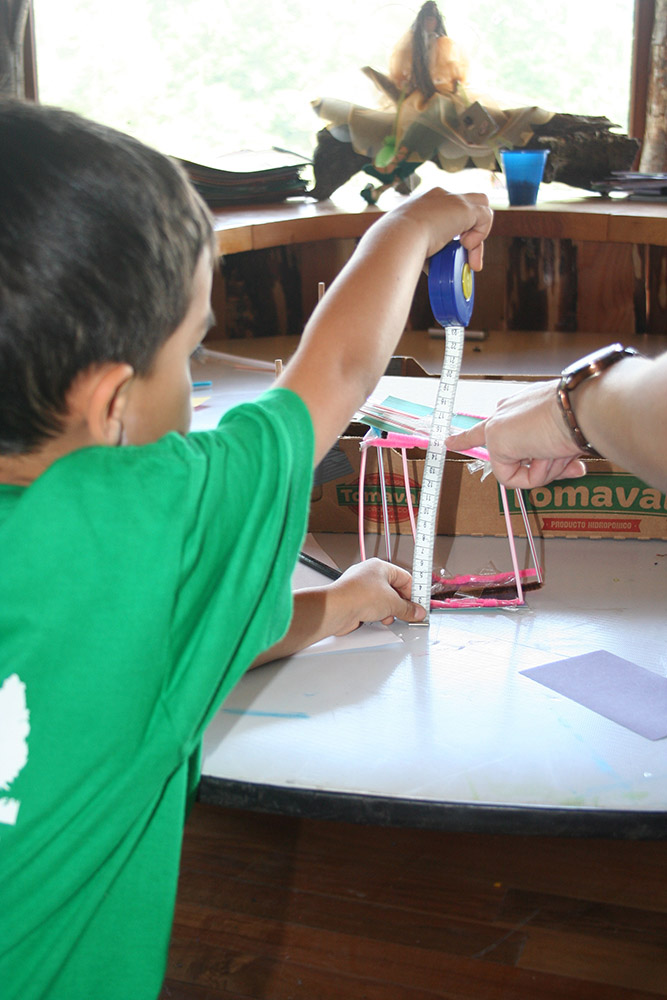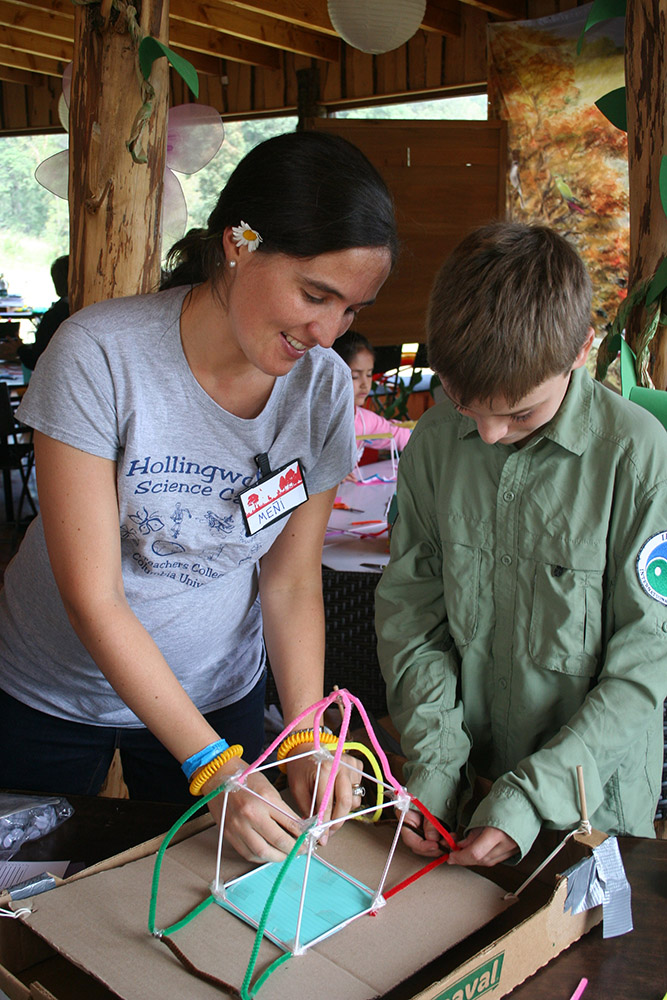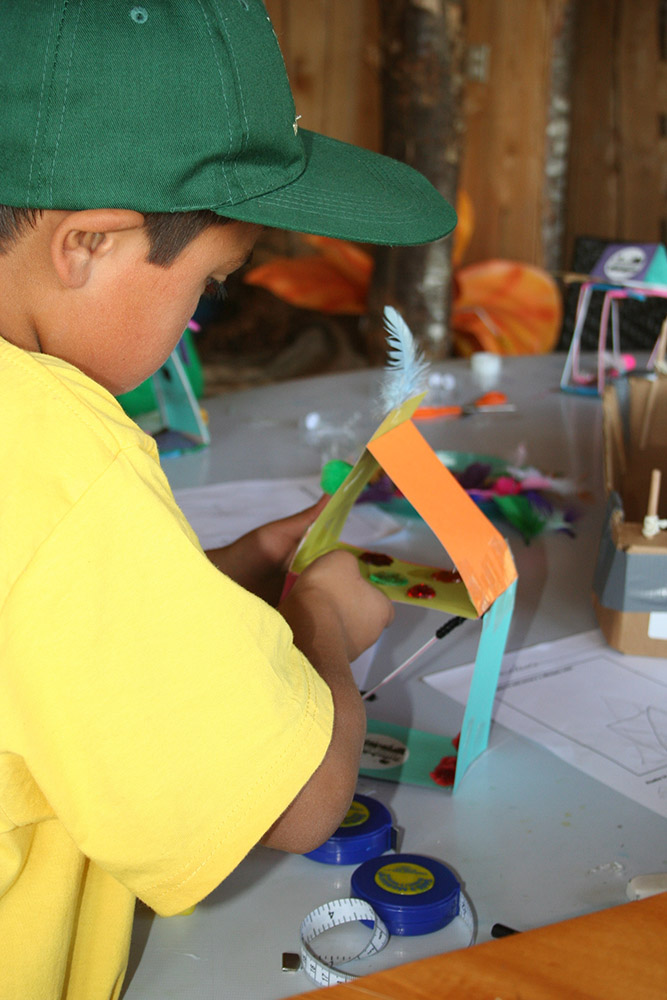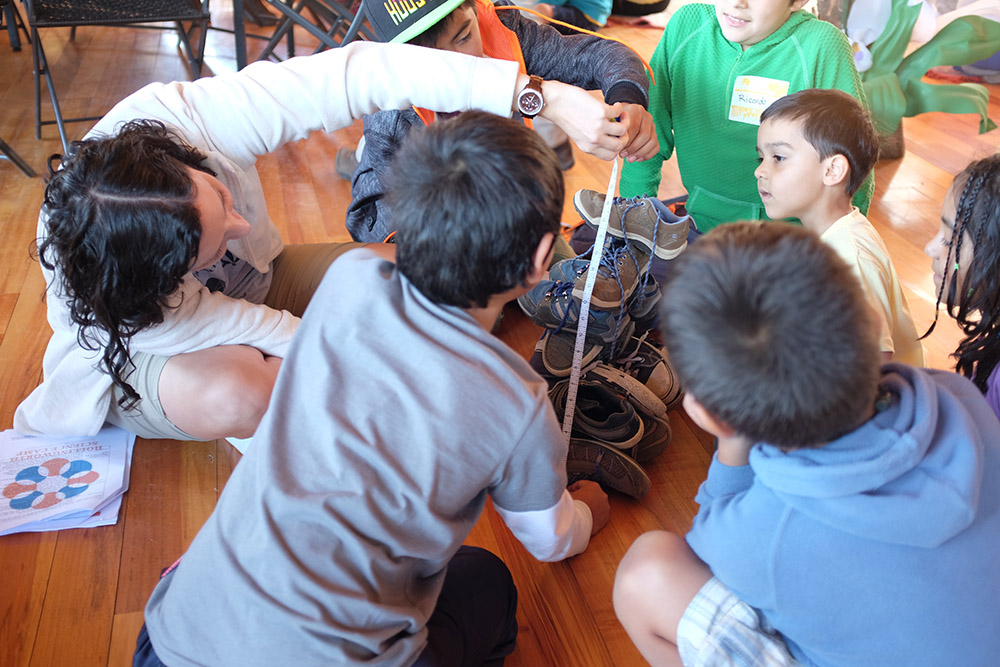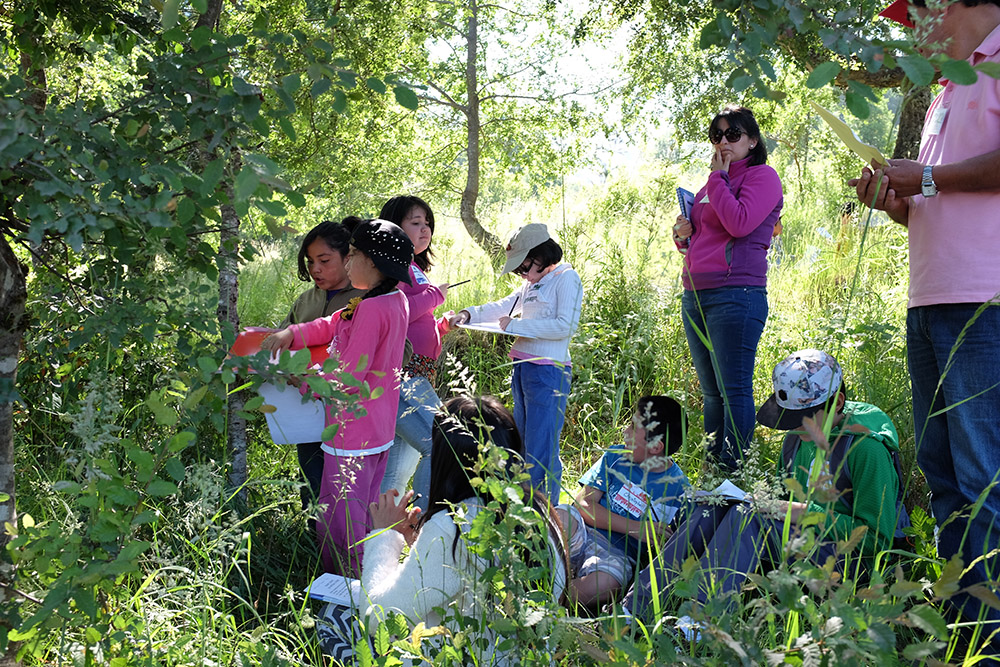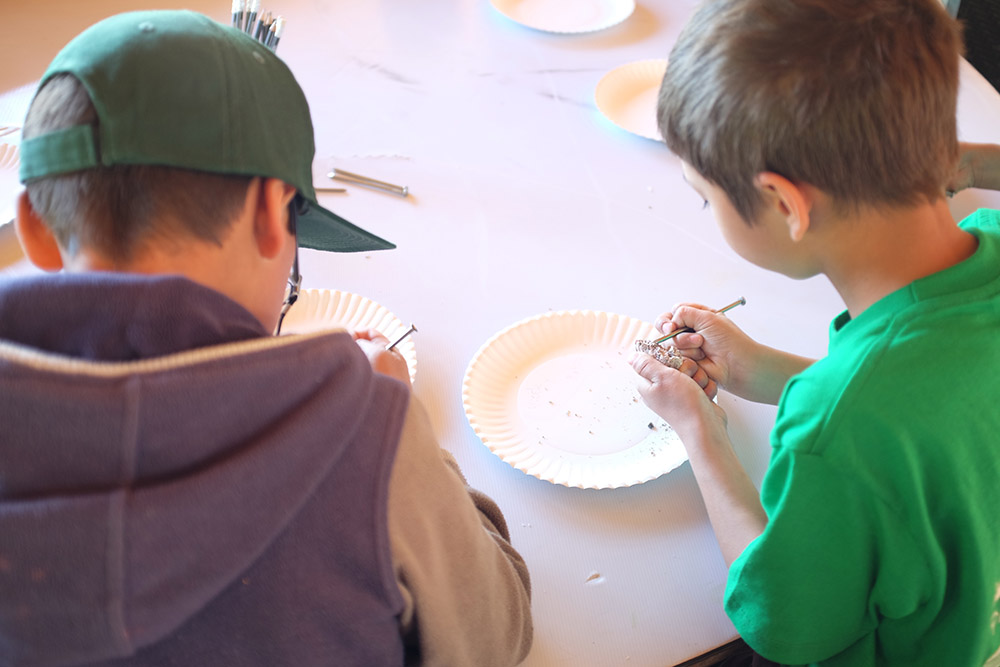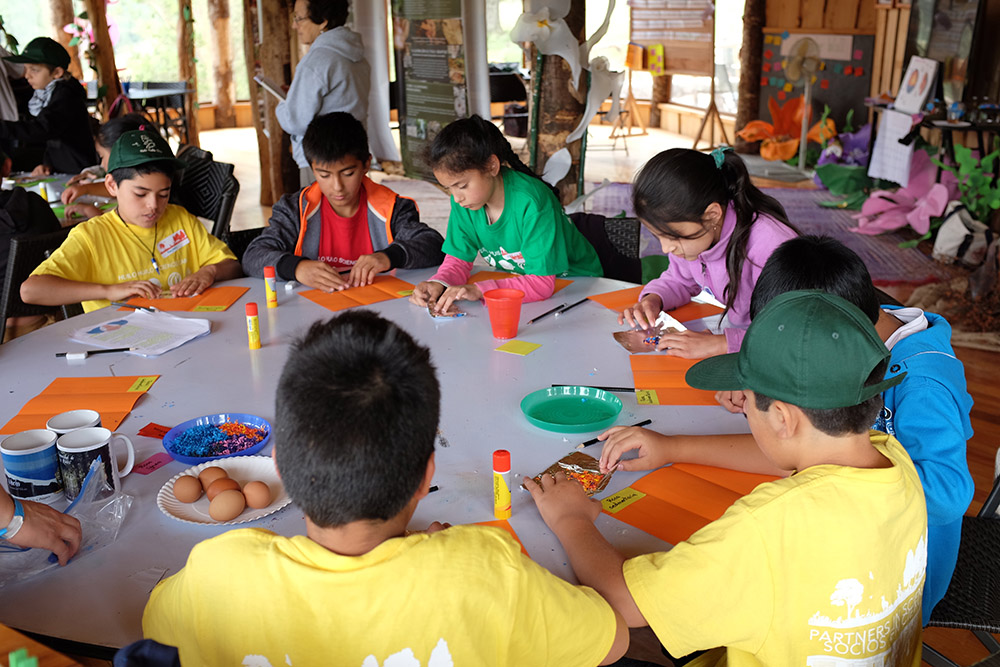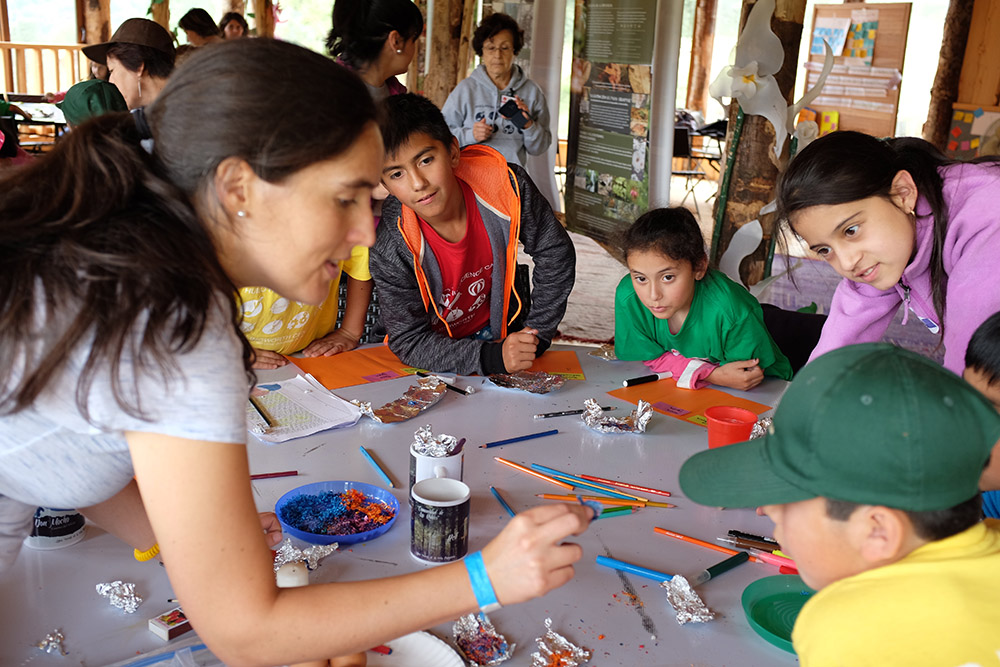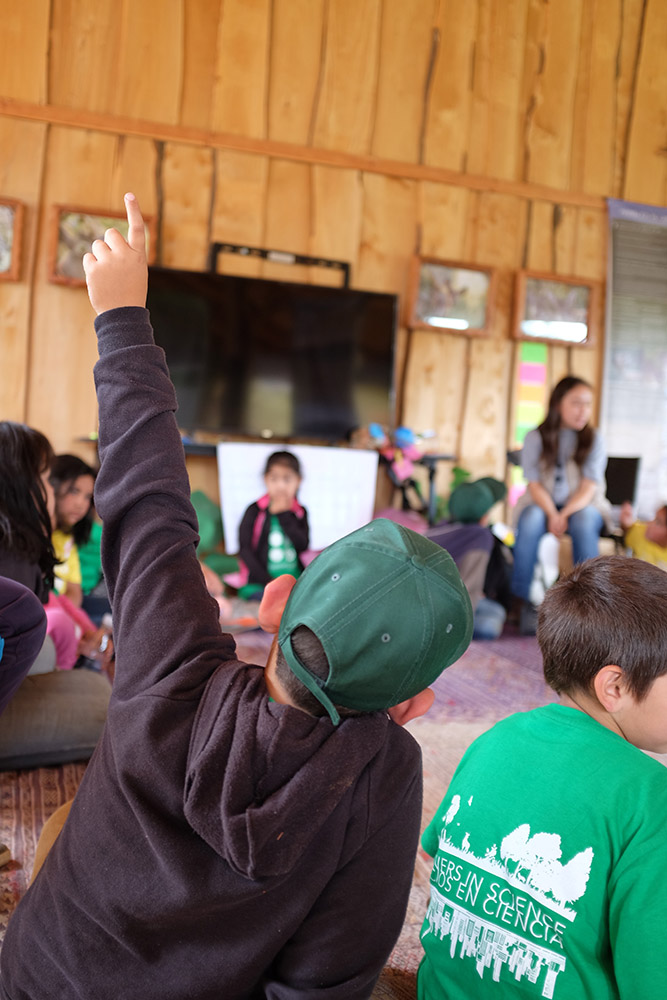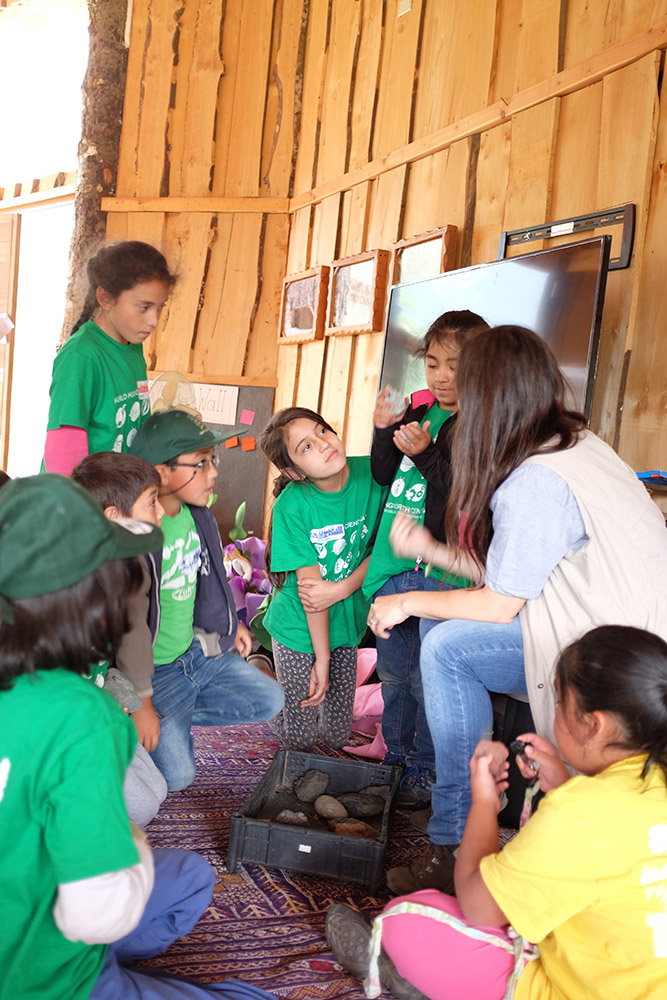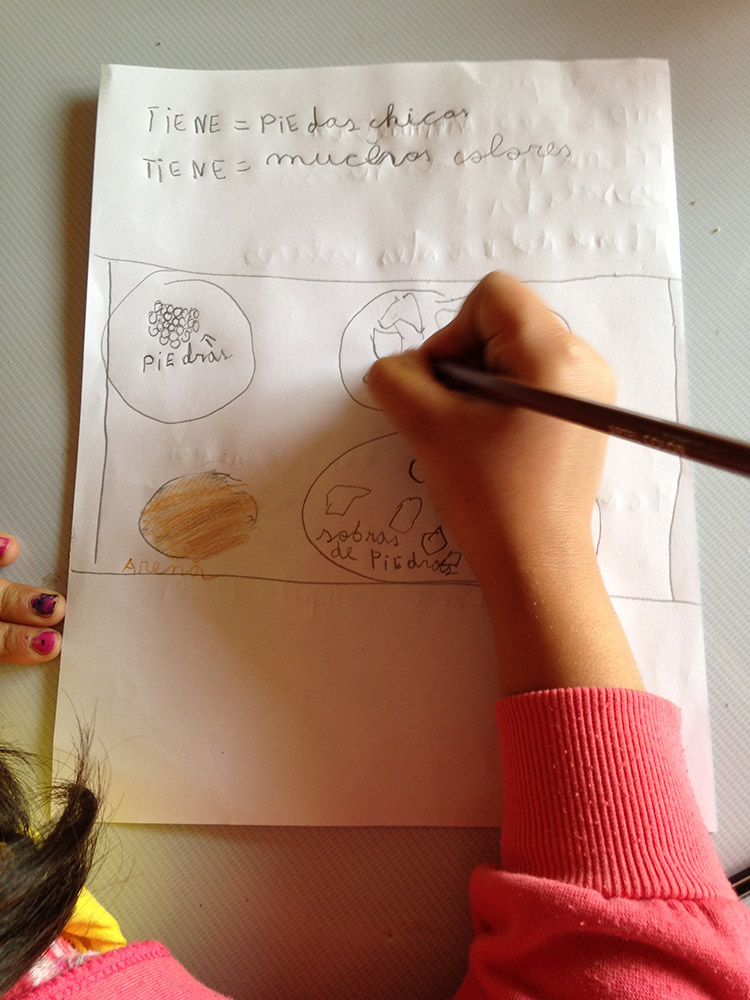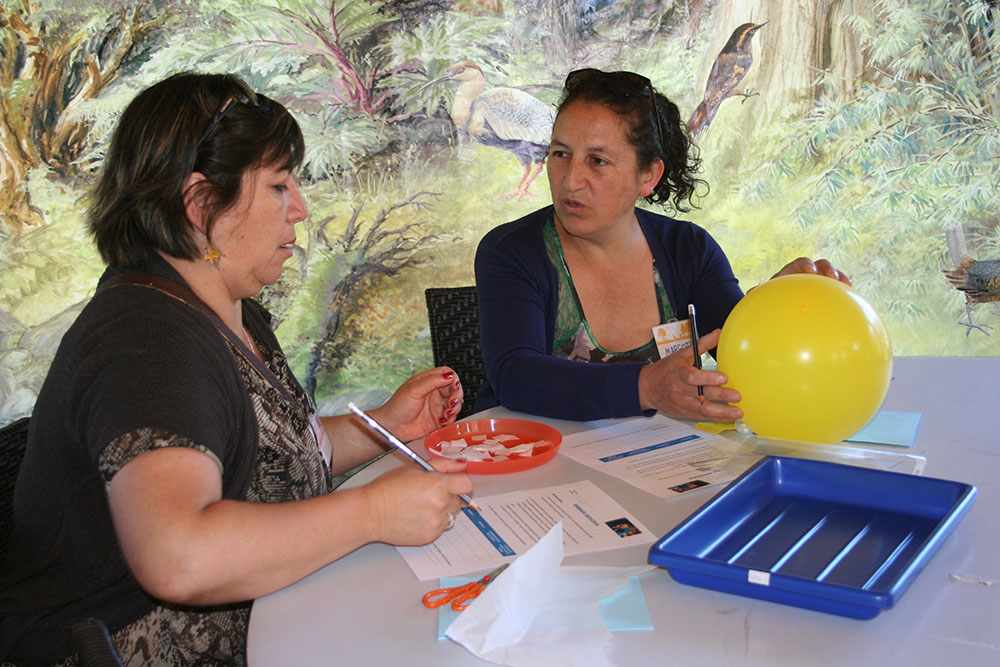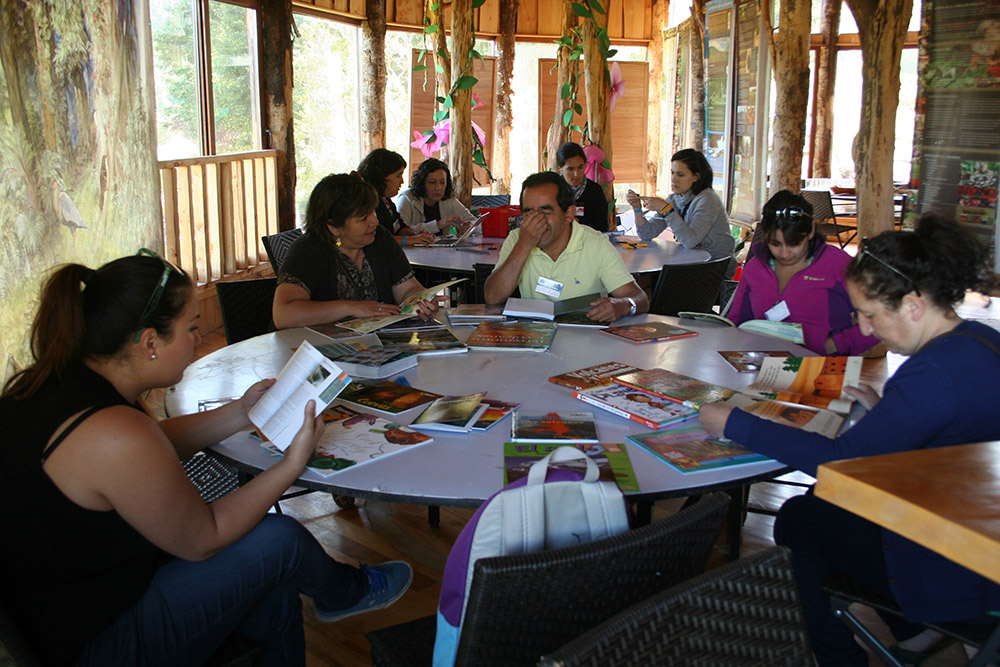Science Camp at Huilo-Huilo, Chile
Skip to content Skip to main navigationThe Hollingworth Center
SCIENCE CAMP AT HUILO-HUILO, CHILE
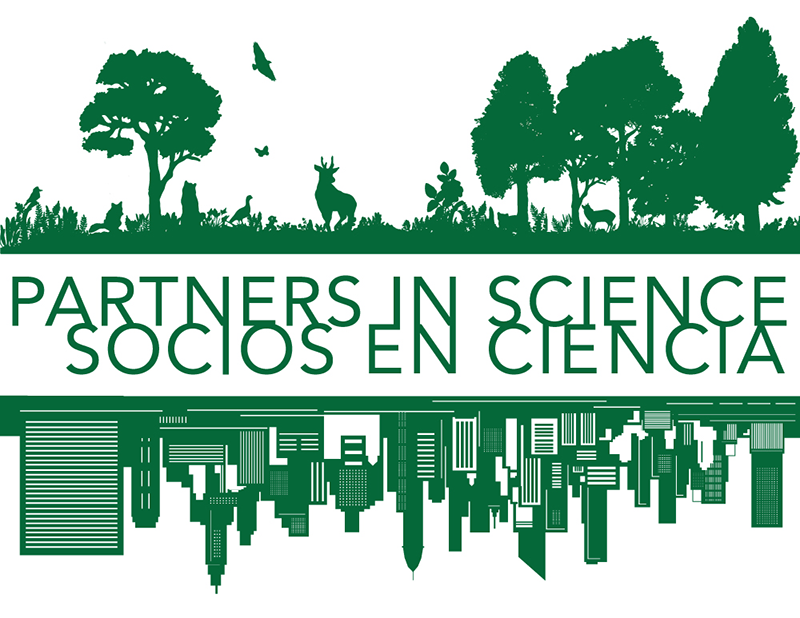
The Partners in Science initiative began in January of 2015 with the Chilean Huilo Huilo Foundation. The Foundation, established in 1999, is an ecological preserve in the Patagonian region of Chile highlighting the threefold mission of land conservation, scientific research, and community outreach. In an effort to expand its educational programming, a science camp for local children was imagined. Through educating the children about the nature surrounding them, the hope was to cultivate a value of, and steward for, the land in this and future generations.
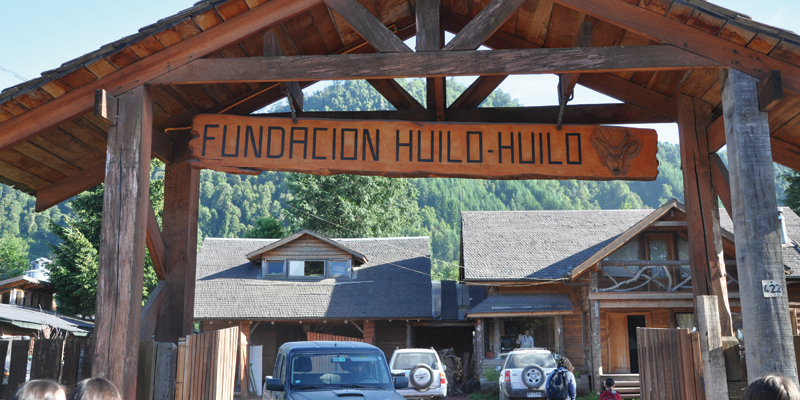
Two goals guided this partnership: the development of inquiry-based science curriculum that was culturally relevant for rural, students from under-resourced and underperforming schools; and sharing the Hollingworth science-centered pedagogical approach with local teachers. Providing professional development offers teachers the opportunity to discover the theories behind this approach and to apply this to all areas of teaching, including but not limited to science. Both of these goals, direct services to children and educators, open new pathways for the development of the potentials and talents of both the students and teachers.
YEAR ONE
The Hollingworth Huilo Huilo Science Camp of 2015 welcomed children in 1st through 5th grade from the town of Neltume in the Region de los Rios part of Chile. During the academic year these students attended Escuela Tierra de Esperanza (Land of Hope School), classified as a rural and low-performing school. Darwin’s frog, a unique species found only in Chile, and researched by scientists at Huilo Huilo, was the camp theme. The challenge was to implement an inquiry-based curriculum with the campers whose education was limited to traditional teacher-directed pedagogy. Through inquiry-based lessons the children explored camouflage, membranes, and the unique life cycle of this fascinating animal. With the goal of bringing the work of scientists into the camp, two researchers investigating Darwin’s frog at the Reserve visited the program, shared their work as well as the challenges of learning about such a delicate animal. In response to this real life dilemma and as a culminating project, the children used the engineering process to design a prototype holding container for field-based observations of the frog.
While the local children participated in their first immersive science experience, pedagogy was also shared with the teachers of Escuela Tierra de Esperanza, so these educators could bring inquiry-based science to their school year round. A two year professional development sequence included a first summer of observation and discussions and a second summer as assistant teachers. The teachers and principal provided positive feedback about the experience and noted their surprise regarding the students’ purposeful engagement and the quick grasp of new scientific vocabulary.
In addition to the camp and teacher training components of the project, Huilo Huilo provided the Hollingworth team a close-up look at projects on the Reserve, in order to gain a deeper understanding of the local research. Toward that end, the partnership team visited the huemul deer enclosure designed to combat its extinction, ventured to the top of a glacier to dig out snow learning how scientists study the layers, drove to a volcano to see the seismic equipment, and shadowed researchers as they captured, catalogued and released Darwin’s frogs to assess the size of their population. This synergy between educators and scientists remains an exemplar of the collaboration between professionals from complementary domains and its impact on science learning for children.
YEAR TWO
The project launched with its second science camp at the Reserve in January 2016. Based on the resounding success of Year 1, 2016 brought increased enrollment as well as the expanded ages of the children from kindergarten through seventh grade. Given the looming presence of the Mocho-Choshuenco volcano and several others visible from Huilo-Huilo, the topic of Earth was chosen as the focus. The campers engaged in place-based science through the study of rocks, minerals, erosion, volcanoes, and earthquakes. A geologist from the Reserve visited and shared her work and the tools she uses in the field. As in the previous year, the engineering design process was incorporated and the children created prototype structures that they tested on a shake table, simulating an earthquake.
The teachers from Year 1 returned as assistant teachers and the second cohort of teachers joined as observers. Staff development workshops prior to the arrival of the children focused on the theory behind inquiry-based science, designing inquiry-based lessons, revising country mandated topics to reflect an inquiry approach, and classroom management of materials and time. An overarching theme was the practicalities of implementation at the educators’ home school.
School Visits At Tierra Esperanza
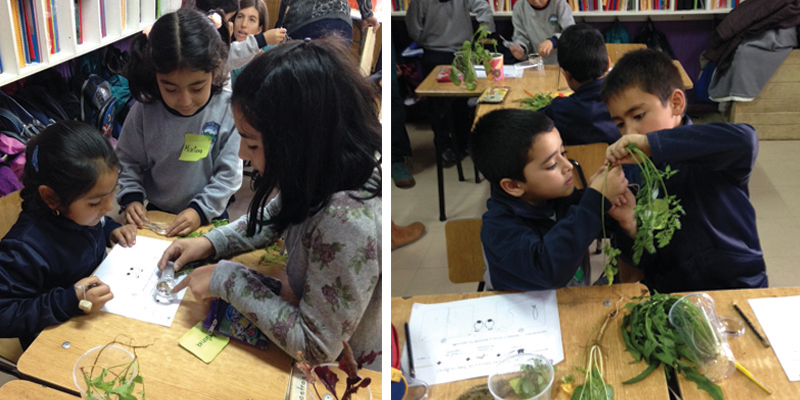
Throughout 2015, the project piloted a collaborative case study with a teacher at Escuela Tierra de Esperanza in Chile. The Chilean context, and specifically the partner school, remained at the forefront of this work, dispelling a one-size-fits-all instructional approach. The two Chilean Hollingworth Fellows along with the Hollingworth team planned inquiry-based lessons based on the first grade Chilean science standards the teacher was required to implement in the classroom. Through exposure to this new approach, the children considered themselves scientists as they engaged in inquiry and developed their scientific mindset. The Fellows visited the school modeling and co-teaching the lessons, partnering on the design of inquiry-based pedagogy, and sharing strategies that nurtured the children’s sense of wonder, curiosity, and sense of self as a scientist.
